Best Carbon Plate Running Shoes
Get set to log some PRs with the best carbon plate running shoes, the fastest shoes on the market
- The Quick List
- For Road Running
- Best Overall
- Best Nike shoe
- The OG super-shoe
- Best For Beginners
- Best Value
- Best Hoka Shoe
- Best Adidas Shoe
- Best Saucony Shoe
- Best New Balance Shoe
- Best Puma Shoe
- Best Mizuno Shoe
- Best On Shoe
- Best Salomon Shoe
- More Road Running Shoes
- Best Brooks Shoe
- For Trail Running
- Best Trail Shoe
- Best Value Trail Shoe
- Best For Ultra-marathons
- Buyer’s Guide
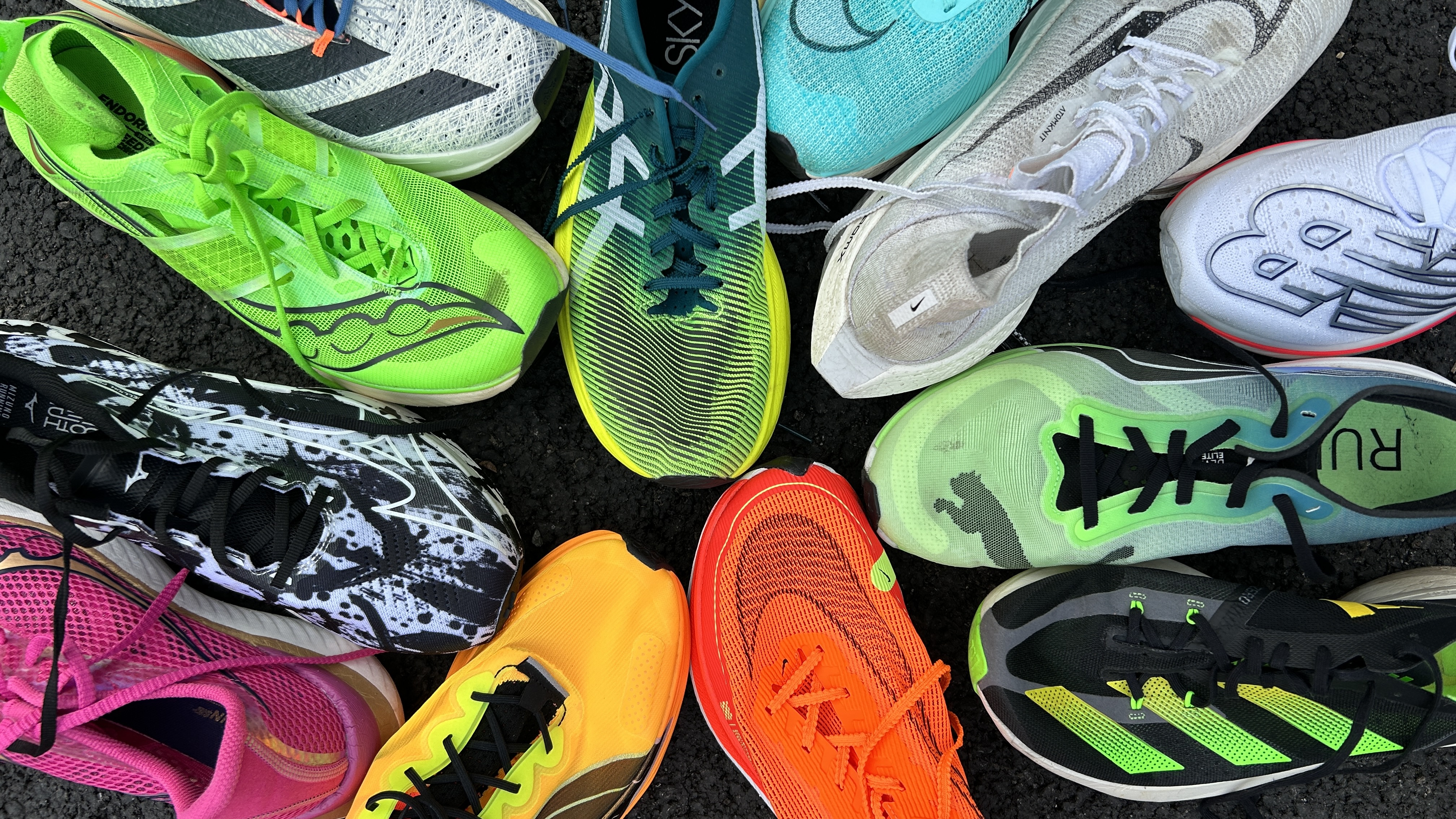
The Quick List ↴
Best Overall: Asics Metaspeed Sky Paris
Best Nike shoe: Nike Alphafly 3
The OG super-shoe: Nike Vaporfly 3
Best For Beginners: Saucony Endorphin Pro 4
Best Value: Kiprun KD900X LD
Best Hoka Shoe: Hoka Cielo X1
Best Adidas Shoe: Adidas Adizero Adios Pro 3
Best Asics Shoe: Asics Metaspeed Sky+
Best New Balance Shoe: New Balance FuelCell SC Elite v4
Best Puma Shoe: Puma Fast-R 2 Nitro Elite
Best Saucony Shoe: Saucony Endorphin Elite
Best Brooks Shoe: Brooks Hyperion Elite 4
Best Trail Shoe: Adidas Terrex Agravic Speed Ultra
Best Mizuno Shoe: Mizuno Wave Rebellion Pro
Best On Shoe: On Cloudboom Echo 3
Best Salomon Shoe: Salomon S/Lab Phantasm 2
Shoes For Trail Running
Buyer's Guide
As recently as a few years ago, keen runners would line up at the start of races wearing stripped-back shoes that prioritized being lightweight above all else. The shoes would have just enough cushioning to make sure your legs didn’t fall off, but everything else was sacrificed.
These days, however, the preferred racing option for many is a shoe with an almost comically high stack of foam and a carbon plate in the midsole. Newer proprietary foams that are soft and springy but light allow manufacturers to cram a huge amount of cushioning into a shoe without making it too heavy to race in. This provides more comfort, so your legs are fresher in the closing stages of a race, which makes more of a difference the longer the event is. At elite level these shoes have led to records being broken; the same is true of PRs at amateur level.
After a couple of years in which the Nike Vaporfly line was the only show in town, every major brand now makes a carbon plate running shoe, though they vary in quality somewhat.
How I Test Carbon Plate Running Shoes
You can trust Coach
I am Coach’s main running shoe reviewer and, as an obsessive road racer, I love testing the best carbon shoes. I have a 5K PR of 15min 30sec and a marathon PR of 2hr 28min (both set in the Nike Vaporfly NEXT% 2). I’m constantly training and racing in attempts to better those times, which gives me plenty of opportunities to test carbon shoes.
I’m one of the few running journalists to have tested almost every carbon plate running shoe, which means I can compare each new release with the best options on the market. I aim to race, or at least do an all-out parkrun (which we all know is not a race but a friendly weekend run), in any carbon plate running shoe I review. I also put them to the test with fast training sessions on the track and road.
I’ve tested almost all the carbon plate shoes available (with the notable exception of the Adidas Pro Evo 1) and picked the best overall, along with the top racing option from each major brand below. This is because many brands now have more than one carbon shoe in their range. I’ve also linked to our longer reviews for each so you can dig deeper.
The Quick List
Here’s a brief run-through of the best carbon plate running shoes. Click on any shoe to jump to the full listing for more detail.
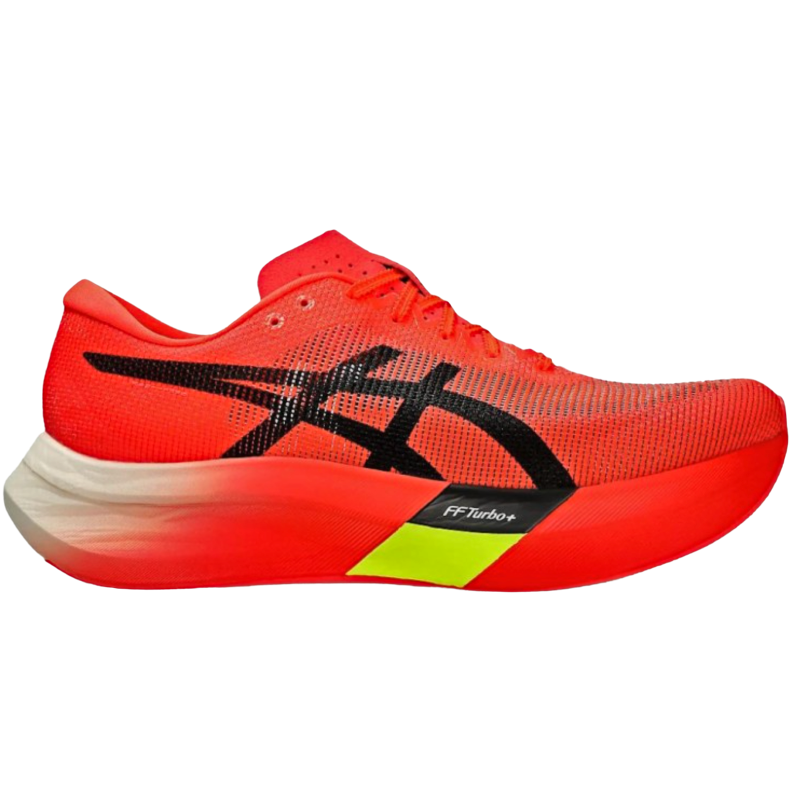
The Metaspeed Sky Paris is the lightest super-shoe on this list, and my favorite overall. It’s bouncy and comfortable over long distances, but feels aggressive and fast for shorter races. It’s pretty much perfect, and a bit cheaper than other top options.
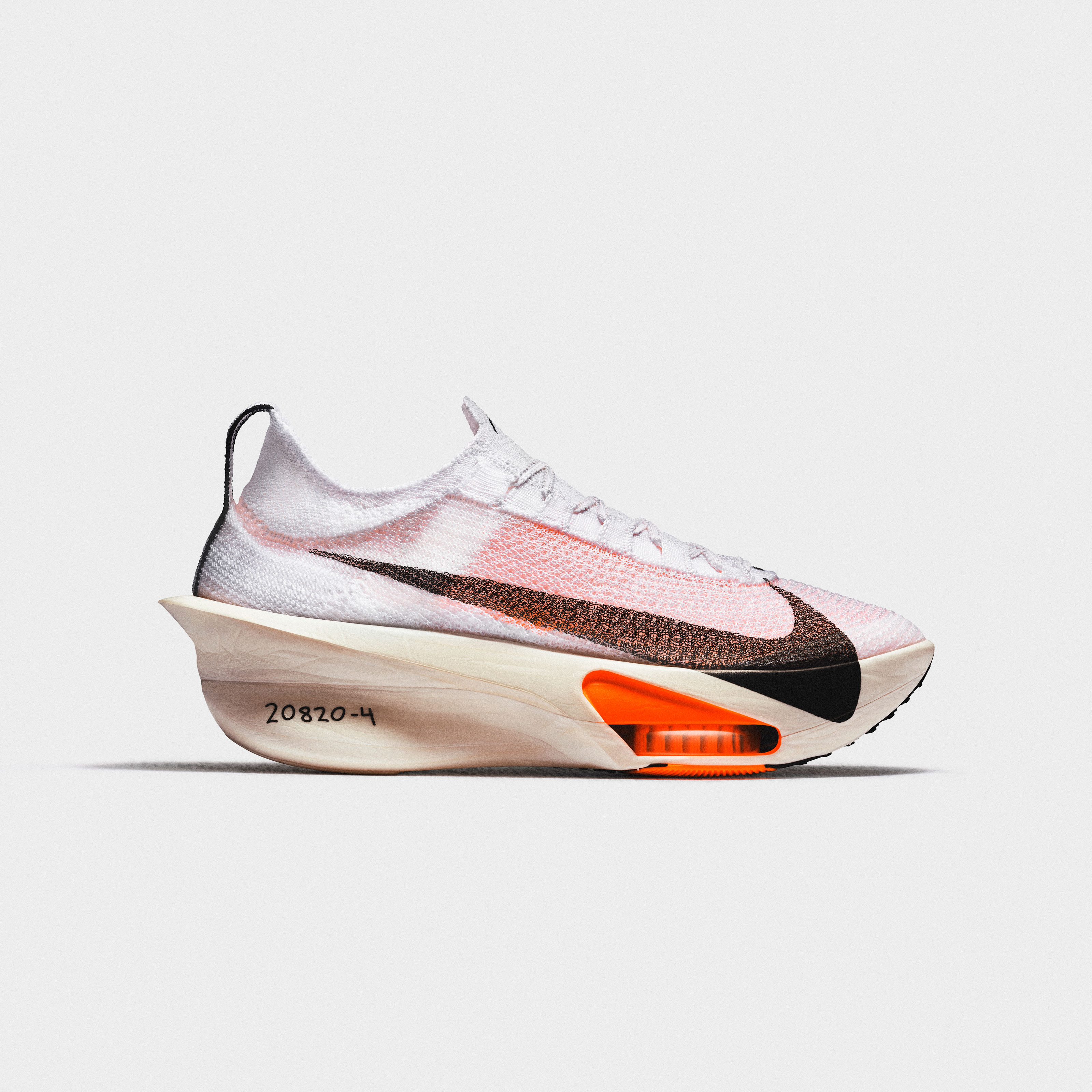
Best Nike shoe
The Nike Alphafly 3 is a brilliant racing shoe and as good as any you’ll find for the marathon. It’s the lightest and fastest Alphafly yet and the springy ZoomX foam will help propel you on your way to PRs.
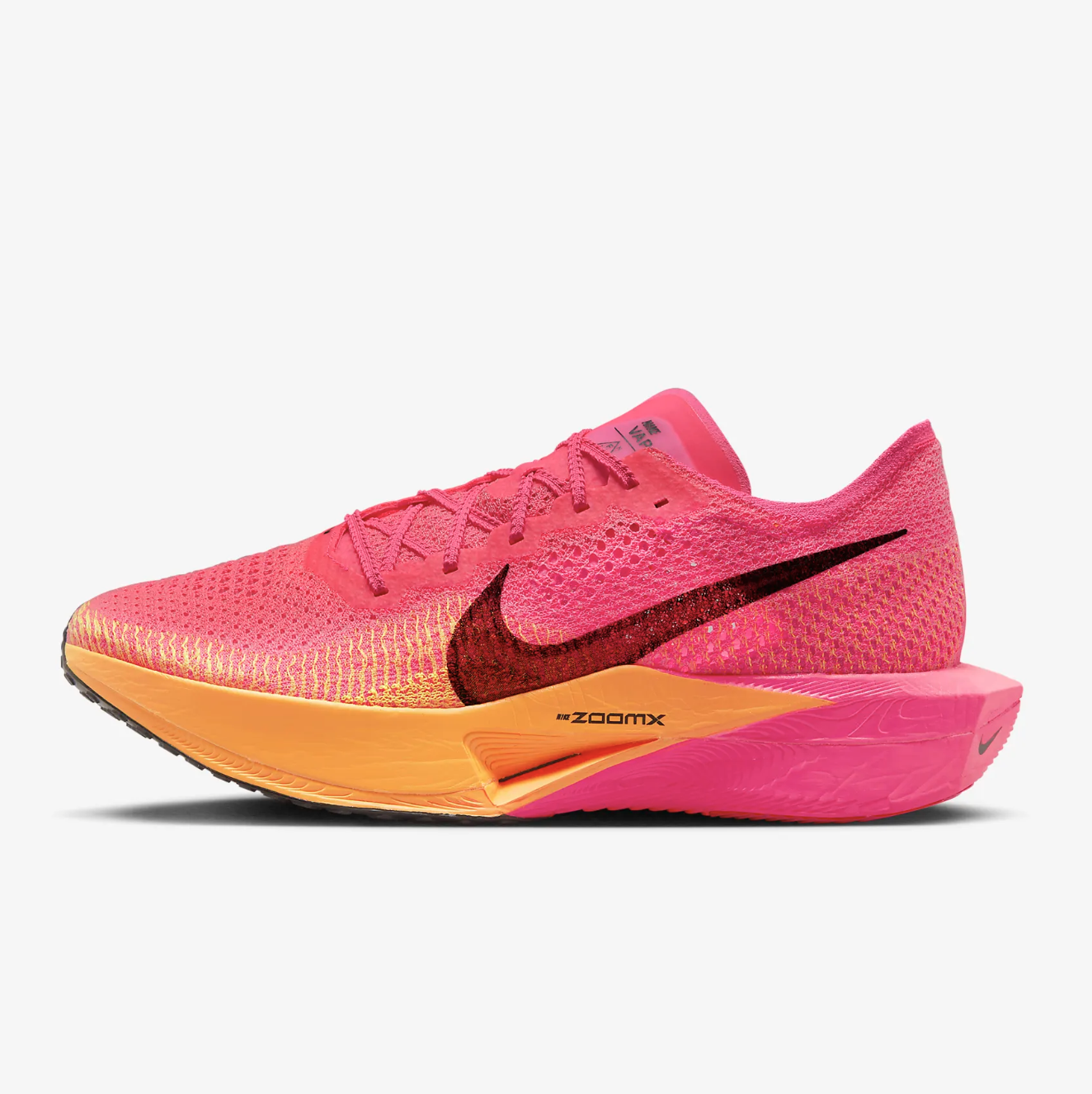
The OG super-shoe
The latest version of the Vaporfly remains a top carbon contender for racing at any distance, and its lightweight, agile design means it stands out for shorter events, such as 5K and 10K races.
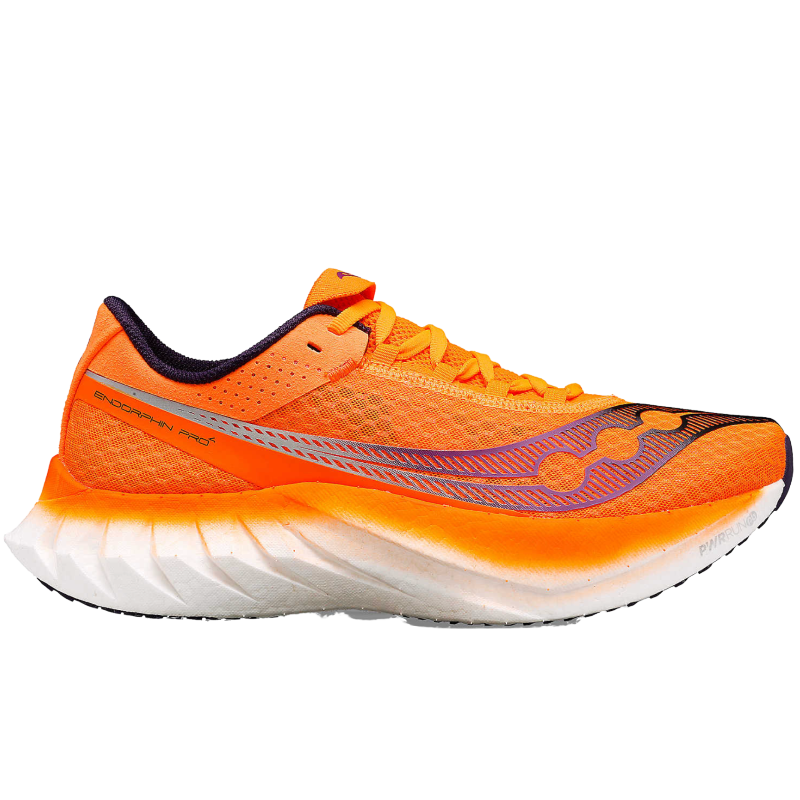
Best For Beginners
The Saucony Endorphin Pro 4 has a more natural and stable ride than many super-shoes and its impressive rocker moves you from heel to toe efficiently. It’s a great first carbon shoe for those unsure about the larger, wobblier options out there—and cheaper than most too.
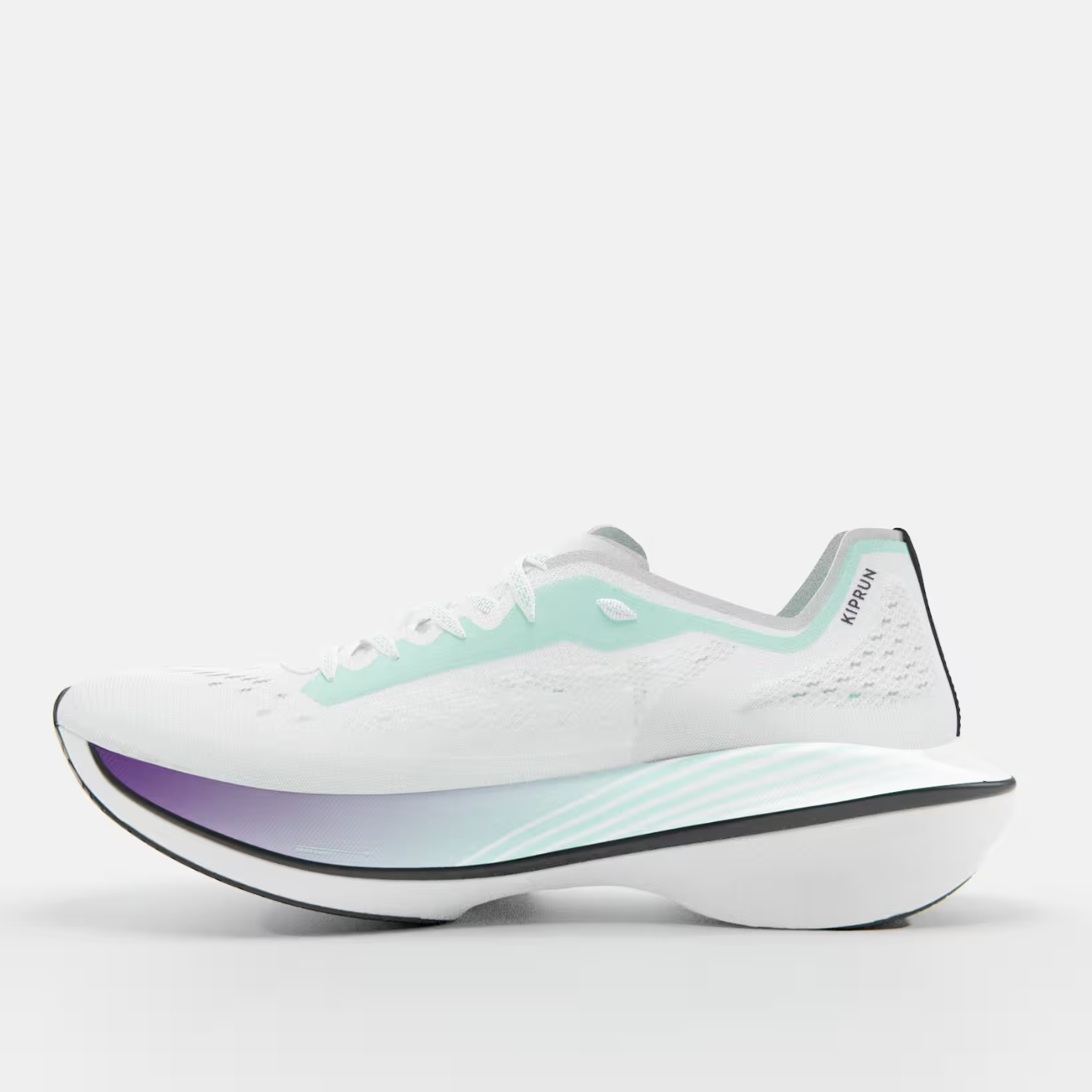
Best Value
The Kiprun KD900X LD from Decathlon is not quite as propulsive and fast as the very best carbon shoes, but it’s not far off and it is considerably cheaper. The shoe is comfortable enough for longer distances, but still lightweight enough for 5K and 10K.
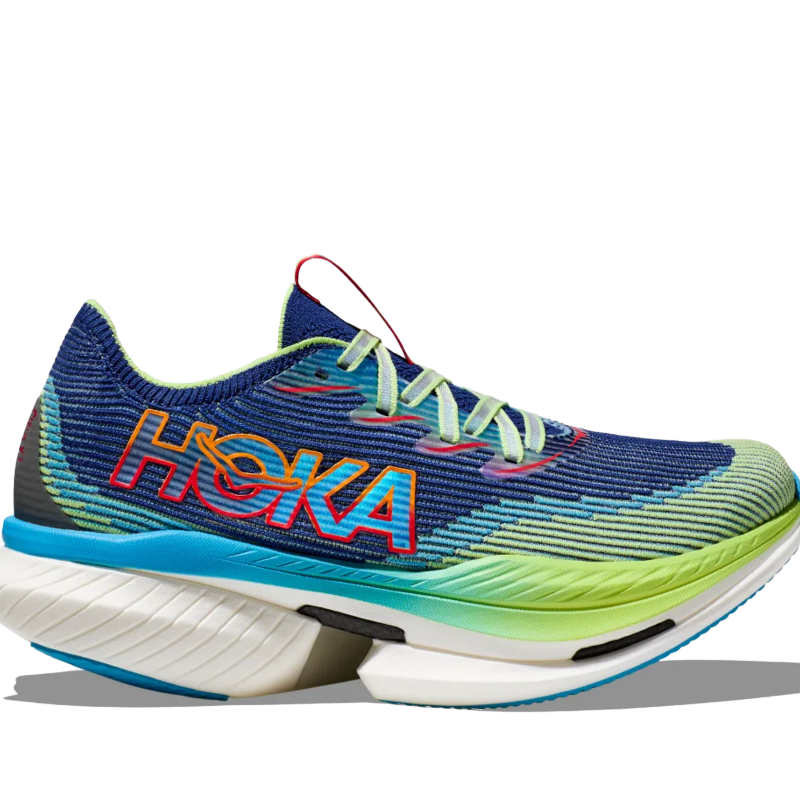
Best Hoka Shoe
The Hoka Cielo X1 is one of the bounciest carbon shoes available from any brand and it’s a particularly good option for long races like the marathon thanks to its springy, comfortable ride. The Hoka Rocket X 2 is also a great shoe, but not as propulsive as the Cielo X1.
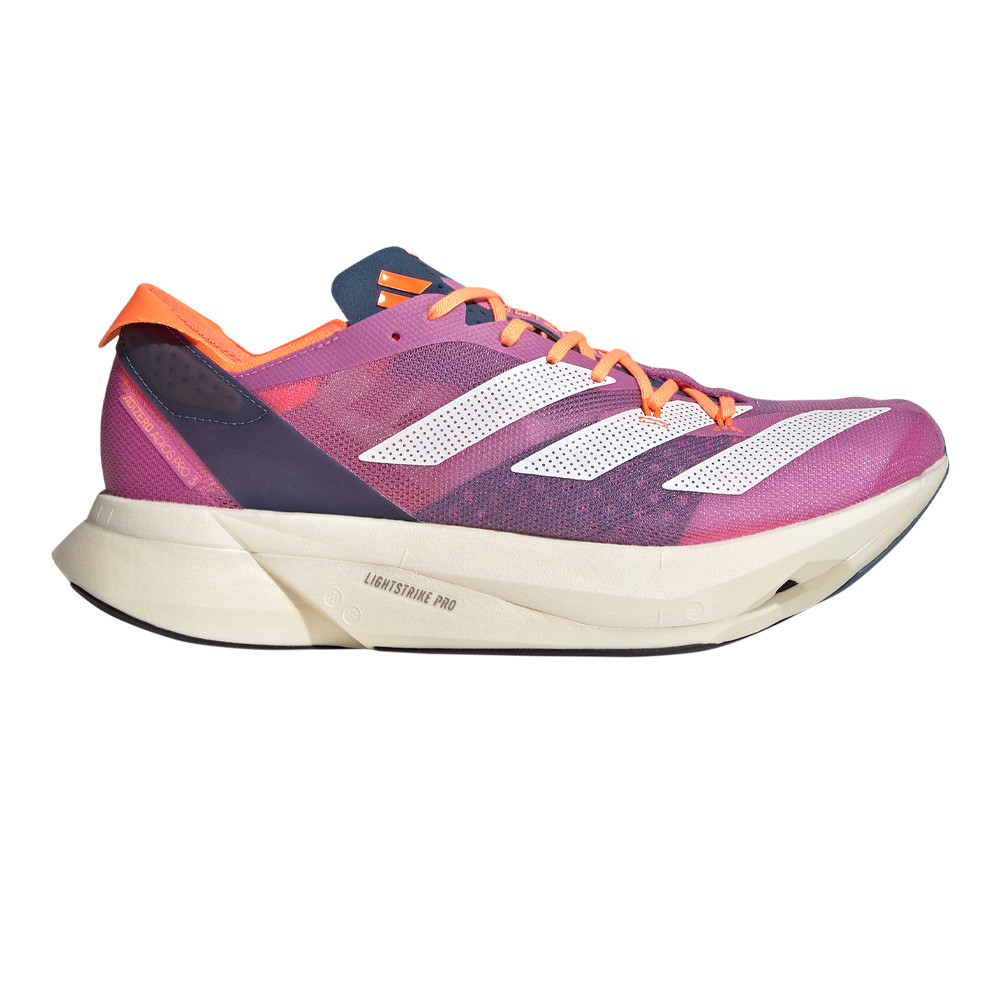
Best Adidas Shoe
Adidas also has the Pro Evo 1 in its range, which its elite athletes use. No doubt that is a faster shoe, but the Pro Evo 1 costs $500 in the US and £450 in the UK, is rarely available, and only lasts a race or two. The Adios Pro 3 is still a great racer and the best pick for amateurs.
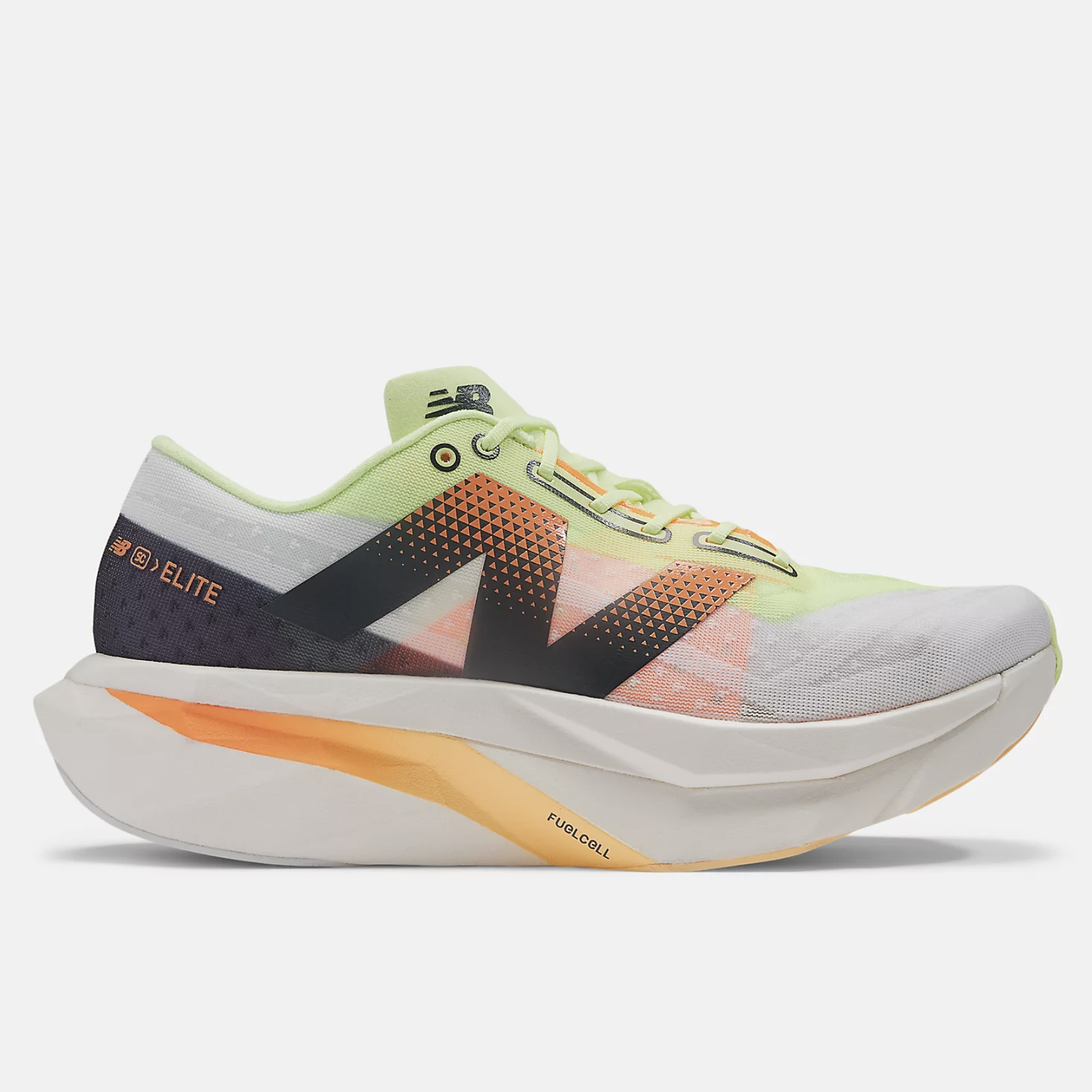
Best New Balance Shoe
The latest version of New Balance's top racer introduces a new Peba-based midsole foam that delivers a bouncier, more comfortable and propulsive ride that makes the shoe ideal for long races in particular.
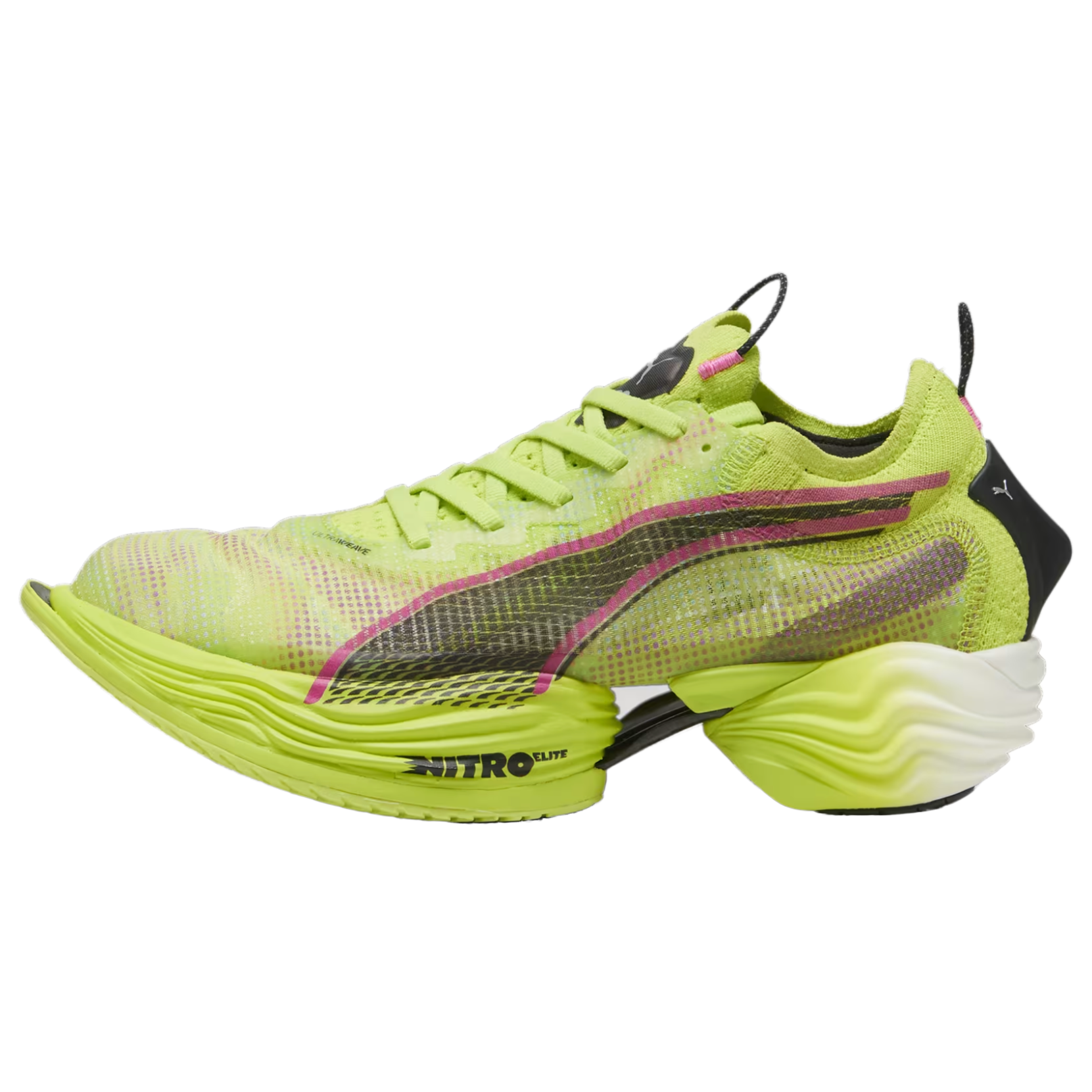
Best Puma Shoe
The Fast-R 2 is one of the wilder-looking carbon shoes, with a decoupled midsole and the plate that extends beyond the front of the shoe. It delivers a highly springy ride that makes it the fastest Puma shoe, though the Deviate Nitro Elite 2 is also excellent.

Best Saucony Shoe
The Endorphin Elite provides a firmer ride than the Endorphin Pro 3 and is lighter and more propulsive, though it is more expensive. It’s one of the best racers, especially over shorter distances.
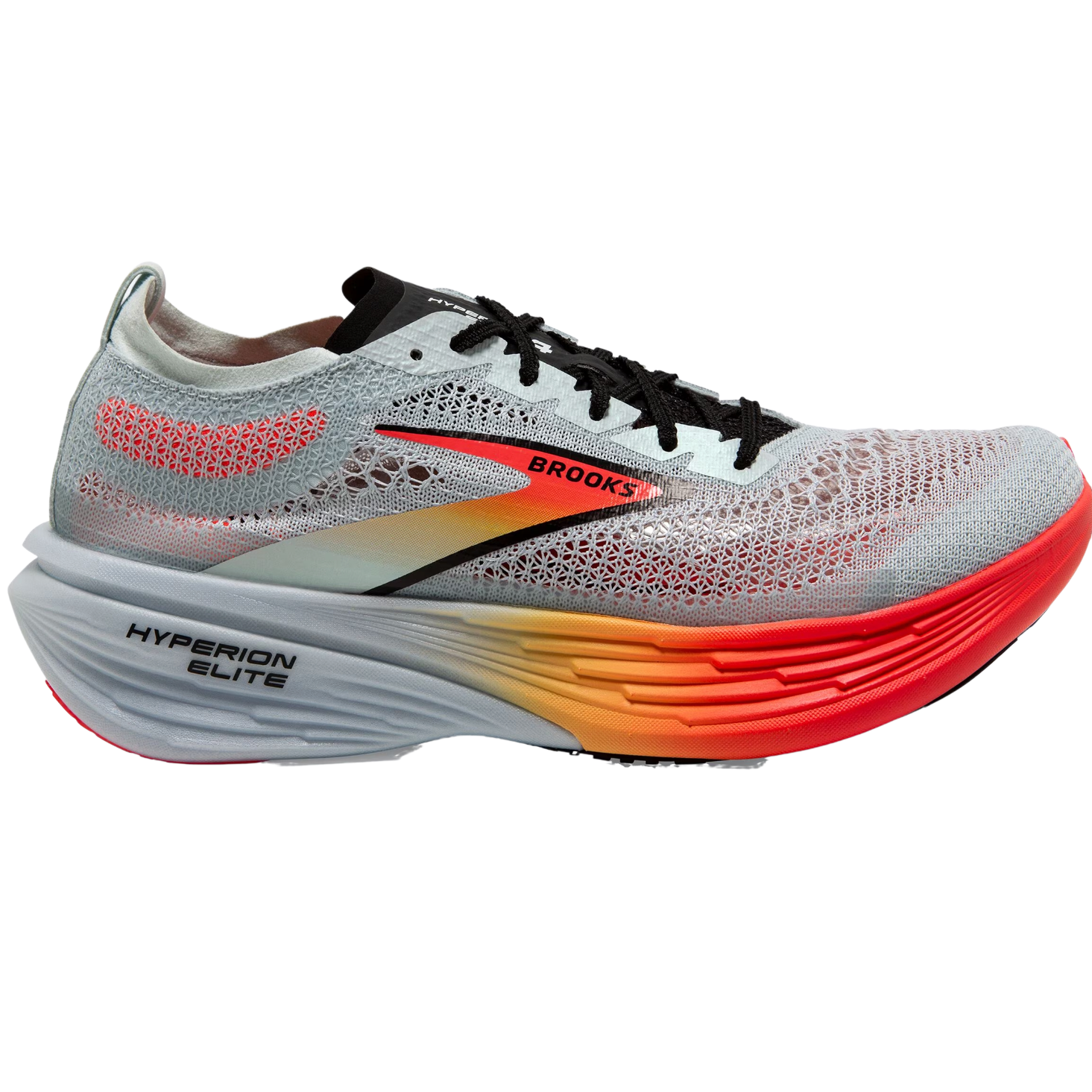
The Hyperion Elite 4 is the fastest Brooks shoe available but lacks the bounce and propulsion of the best racing options from other brands. It’s lightweight and has a firmer feel than others, and is more stable than most super-shoes.
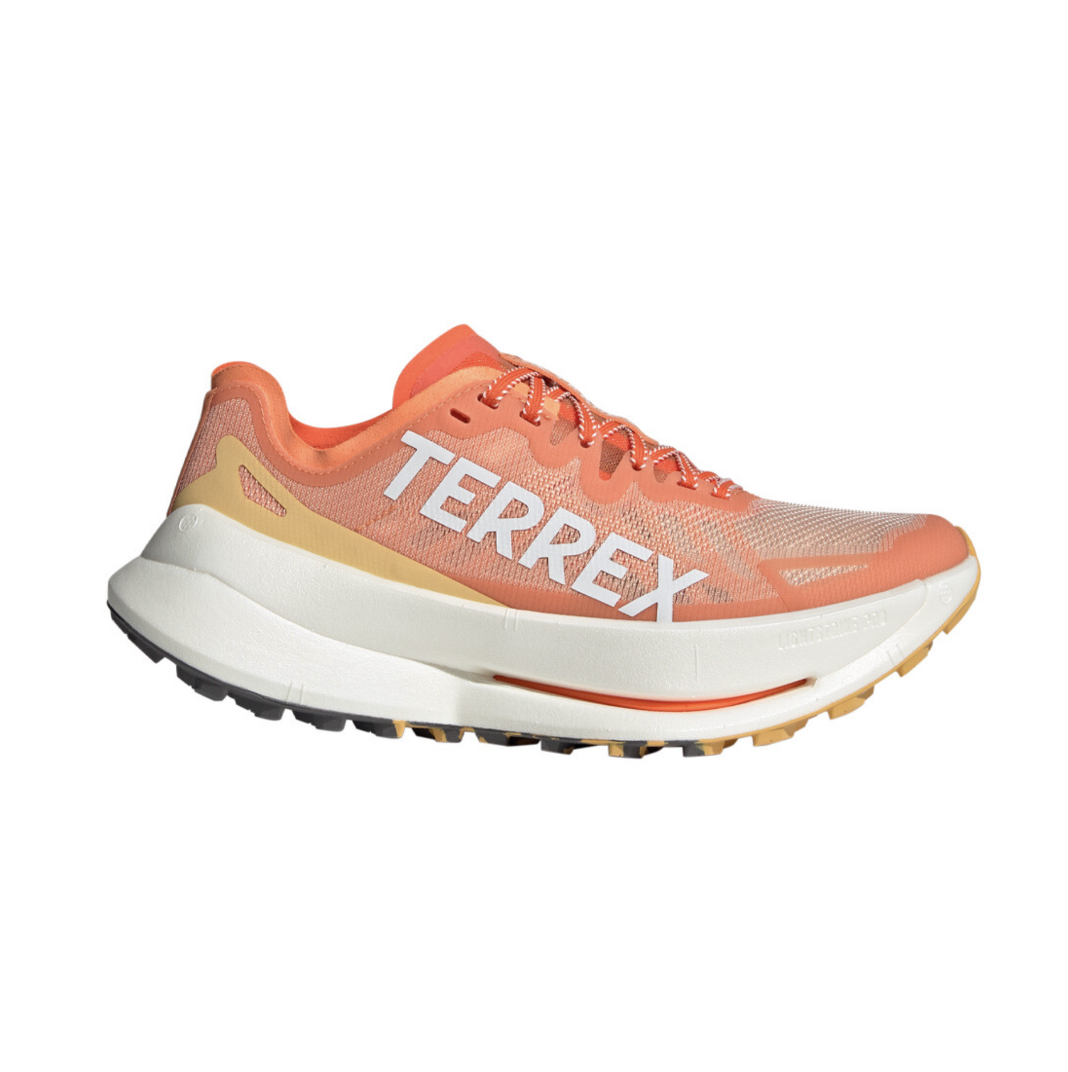
Best Trail Shoe
The Adidas Terrex Agravic Speed Ultra has a bouncy, rockered ride that’s similar to the best road racing shoes, and while it’s not as stable as other trail super-shoes, it’s the fastest and most propulsive trail shoe I’ve come across.
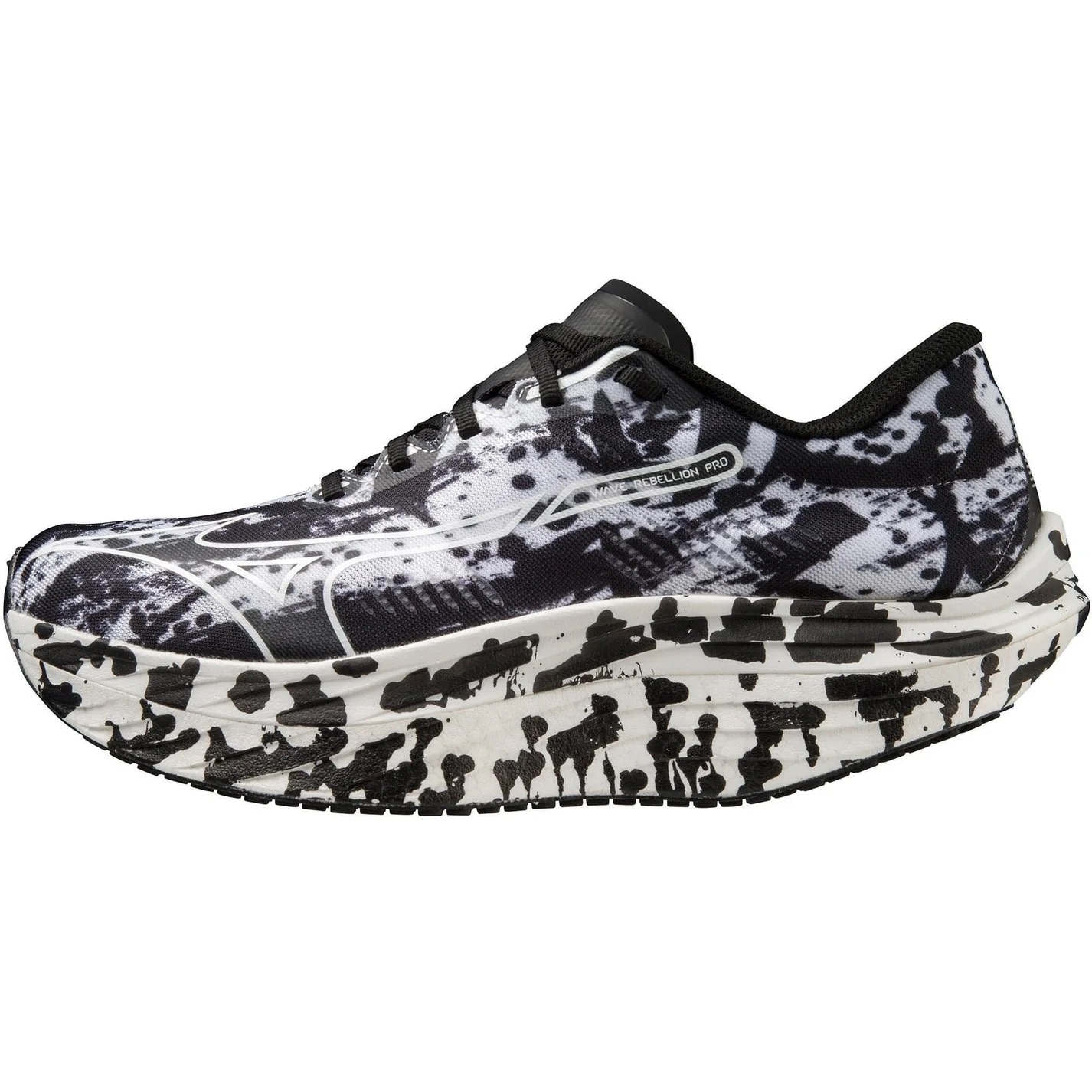
Best Mizuno Shoe
The dramatic heel cut-out and aggressive rocker on the Wave Rebellion Pro look like they’re going to affect your gait, but once you hit race pace the shoe is as bouncy and fun as anything on the market. The shoe is best for midfoot-forefoot strikers thanks to the shape of the midsole.
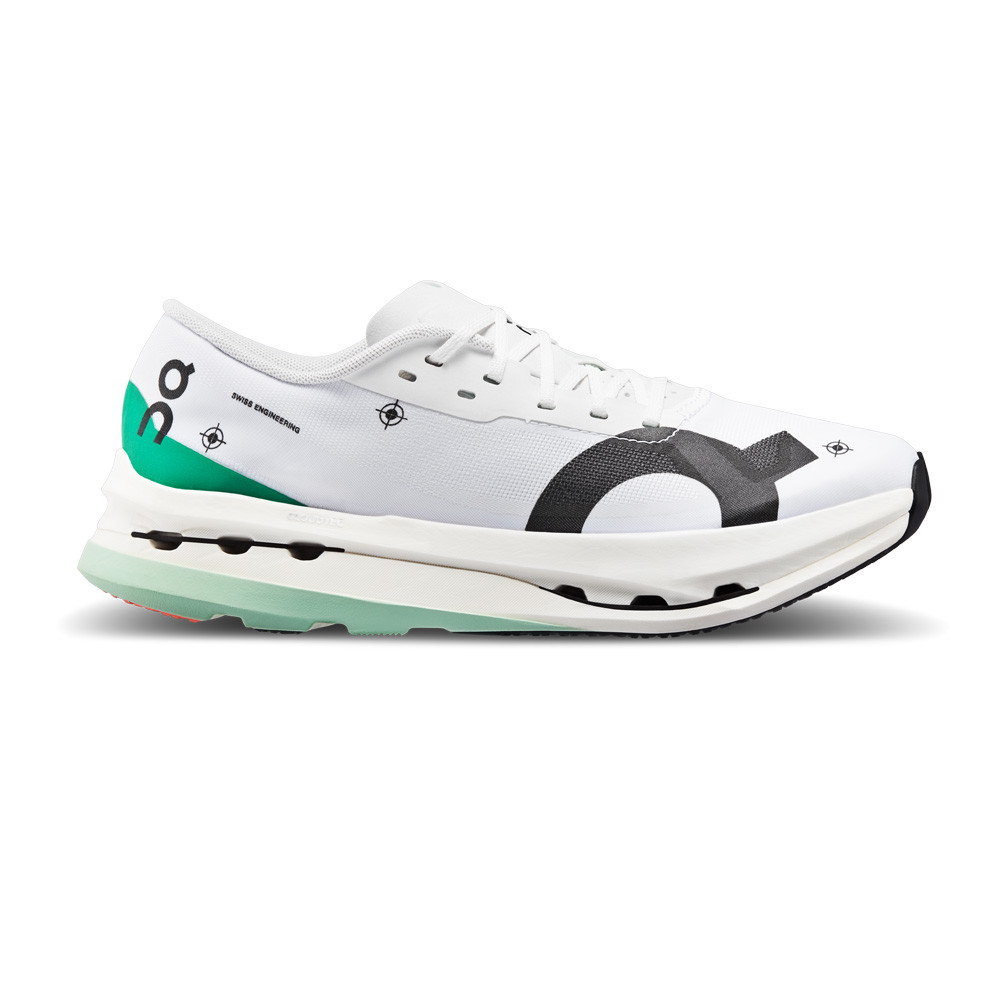
Best On Shoe
On missed the mark with the early versions of the Cloudboom racing shoe, but its third release is an improvement thanks to the higher stack of springy Peba-based foam in the midsole. The high price may be off-putting to some, but the performance is great.
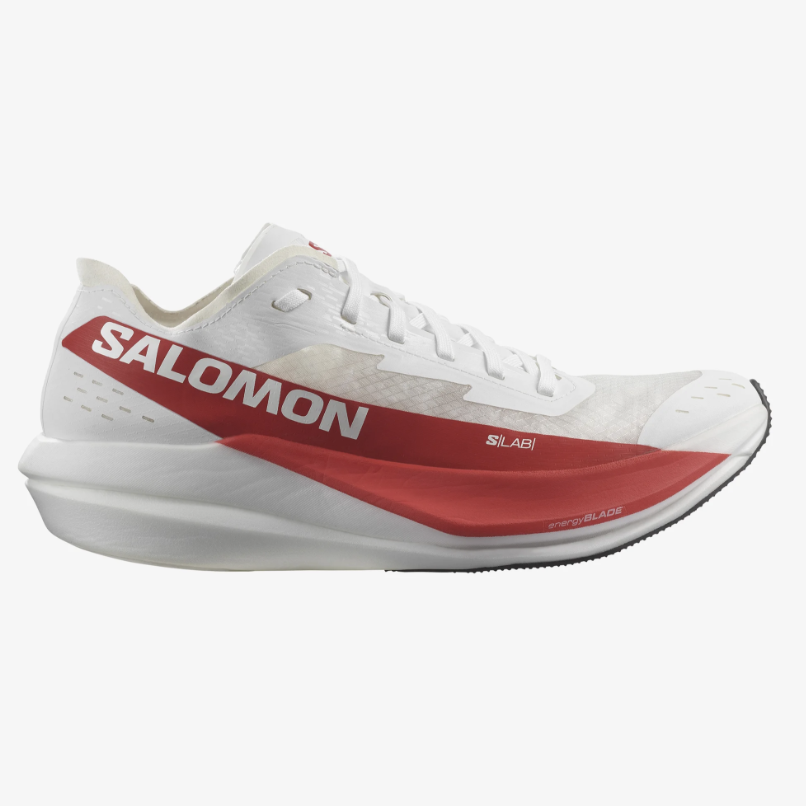
Best Salomon Shoe
Salomon’s best racing shoe ever, the S/Lab Phantasm 2 is brilliant, if overpriced. I loved it for fast runs of any length, but did find the grip surprisingly poor on slick paved surfaces at times.
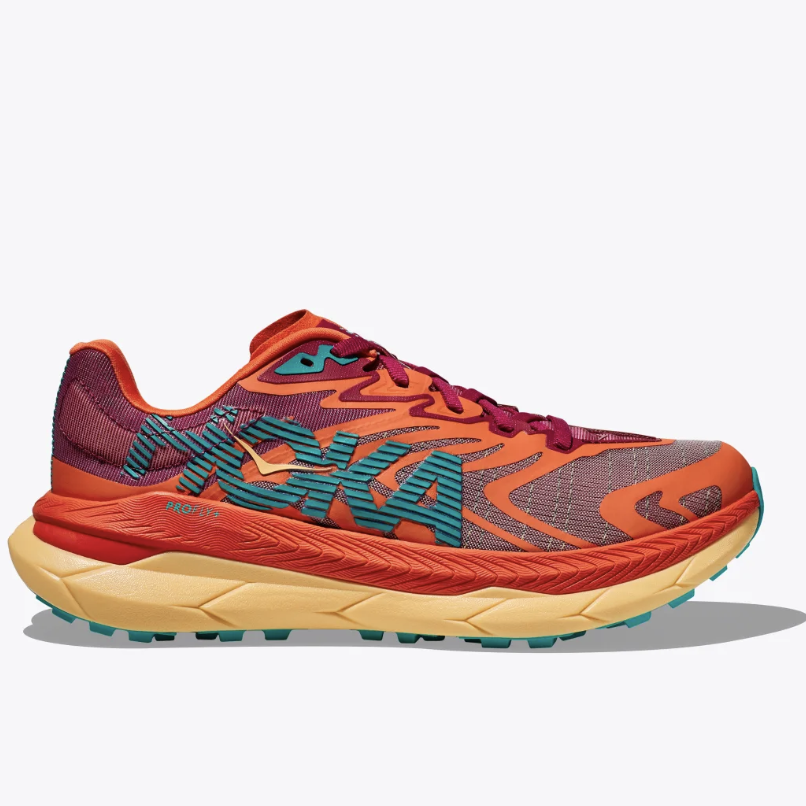
Best For Ultra-marathons
If you want a cushioned, comfortable carbon shoe to handle a range of terrain on your longest trail runs, the Tecton X 2 will serve you well. Its dual-plate design means it’s stable and more flexible than some plated shoes on uneven ground.
The Best Carbon Plate Running Shoes
Best Overall
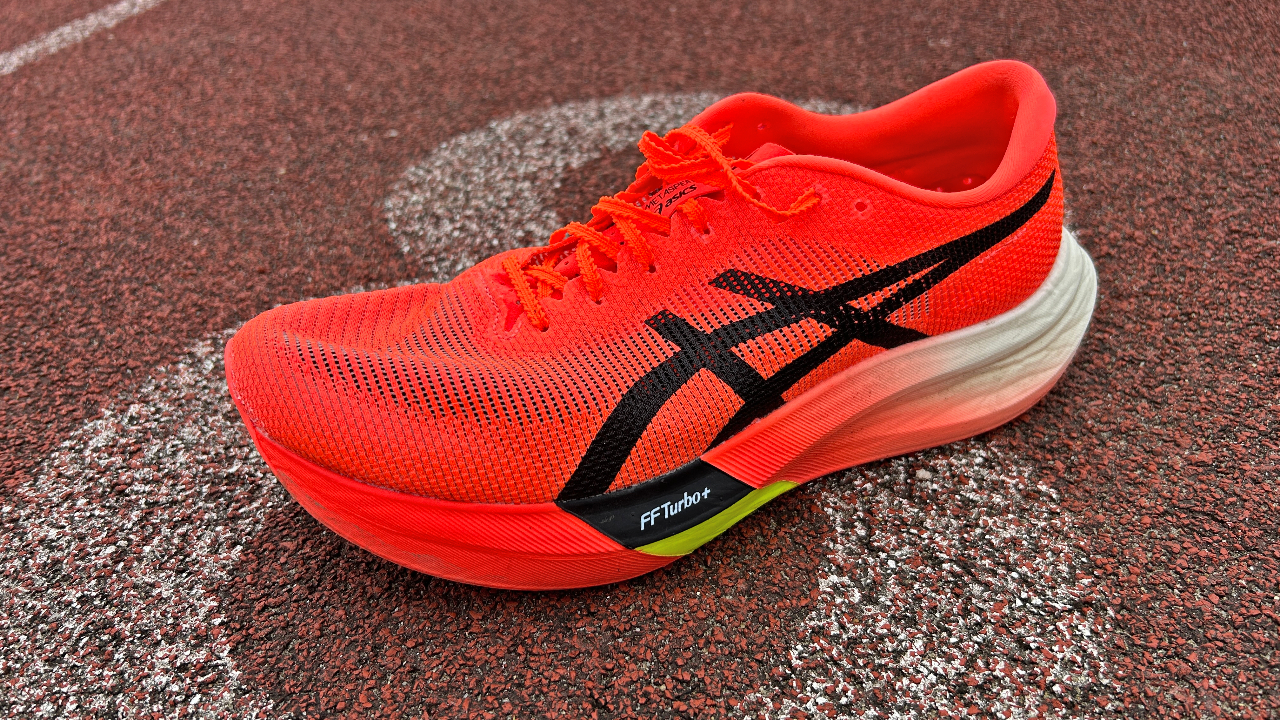
Specifications
Reasons to buy
Reasons to avoid
After testing and loving the Nike Alphafly 3 I didn’t expect any shoe to impress me more in 2024, but the Asics Metaspeed Sky Paris has shot to the top of my carbon shoe rankings. It’s an outstanding racer for any distance thanks to its light design and bouncy midsole foam, and as a bonus is cheaper than other top shoes, including the Nike Alphafly 3.
Asics has updated the midsole foam compared with the Metaspeed Sky+, and the new FF Turbo+ material is lighter, springier and softer. The shoe feels light and aggressive for short reps and races, but then has the bounce and protection you expect from a modern super-shoe over longer distances. The Metaspeed Sky Paris is one of two carbon racers in the Asics range and is aimed at bounding runners, with the Metaspeed Edge Paris meant to suit high-cadence runners.
Read more in my Asics Metaspeed Sky Paris review
Best Nike shoe
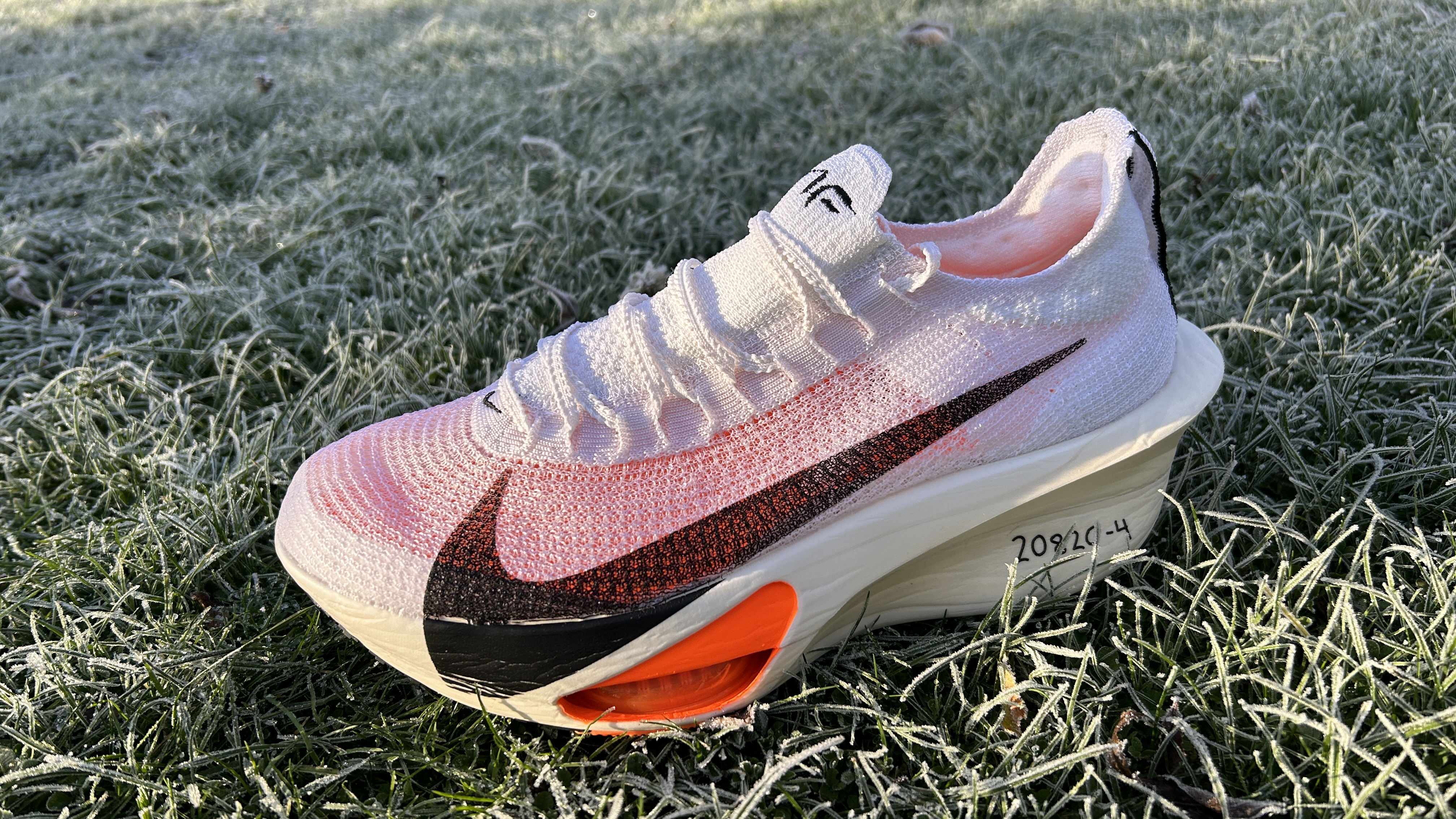
Specifications
Reasons to buy
Reasons to avoid
The Nike Alphafly 3 is the lightest, and best, version of the Alphafly. I prefer the ride feel of the Asics Metaspeed Sky Paris, but the Alphafly 3 is its equal in terms of performance, especially for the marathon. The ZoomX foam and Air Zoom pods in the midsole create a propulsive, efficient ride that makes holding your race pace feel effortless at times. I found the new continuous midsole resulted in a faster, smoother transition onto my toes compared with the Alphafly 2. It’s a terrific shoe for any kind of fast running and any event distance. I loved racing 5K and 10K in it, although I think it will shine even more over longer distances.
Read more in my Nike Alphafly 3 review
The OG super-shoe
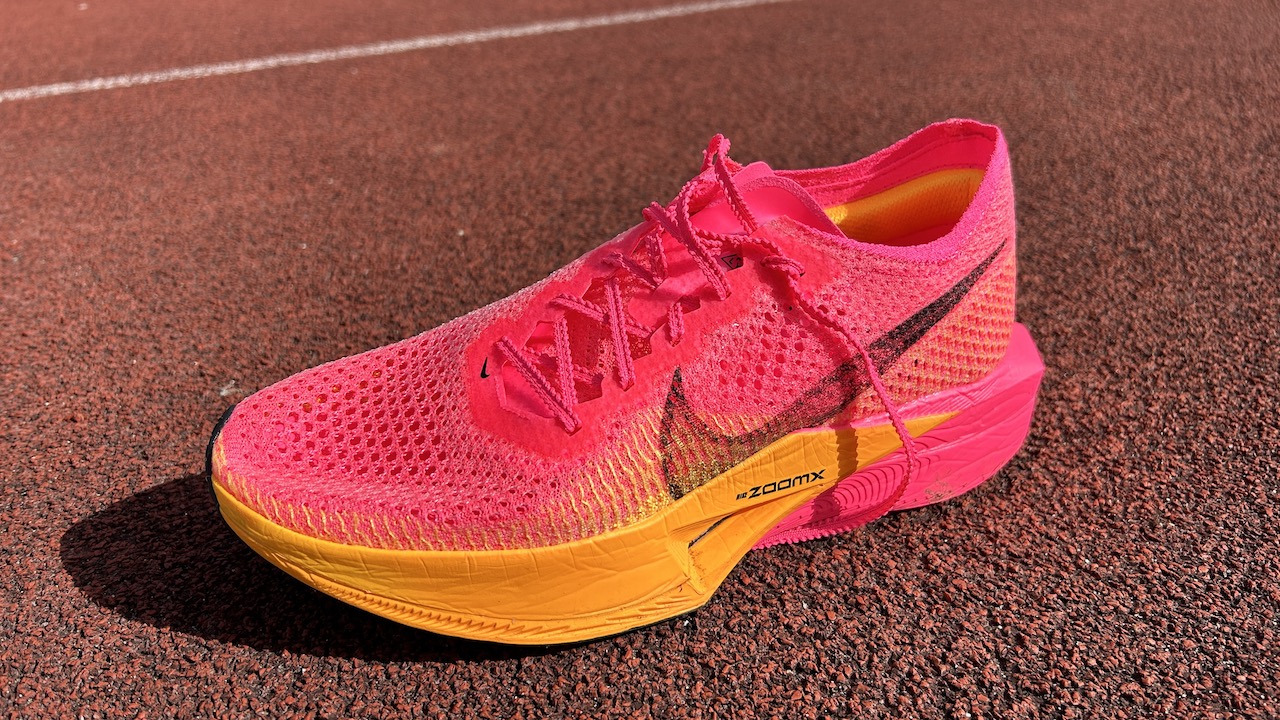
Specifications
Reasons to buy
Reasons to avoid
A lot has changed in the running shoe world since the Nike Vaporfly 4% launched in 2017. However, even as other brands have released their own super-shoes and Nike has brought out the Alphafly, many runners are happy to stick with the latest version of the original, and they’re not losing out on performance by doing so.
Given its light weight, the Vaporfly 3 has no right to be as bouncy and cushioned as it is, and it’s a phenomenal racing shoe for any distance. It’s more nimble, and narrower, than the Alphafly 3, and some runners may prefer the lighter Vaporfly for shorter events where it’s arguably the best shoe from any brand. I found the Vaporfly 3 outstanding when running the 2023 London Marathon in it, thanks to the extra cushioning Nike added when updating from the Vaporfly 2. It’s still an aggressive shoe because it tips you onto your toes, though my only complaint is that the thin outsole isn’t durable. It’s one to save for race day and key training sessions.
Read more in my Nike Vaporfly 3 review
Nike Vaporfly 3 Video Review
Best For Beginners
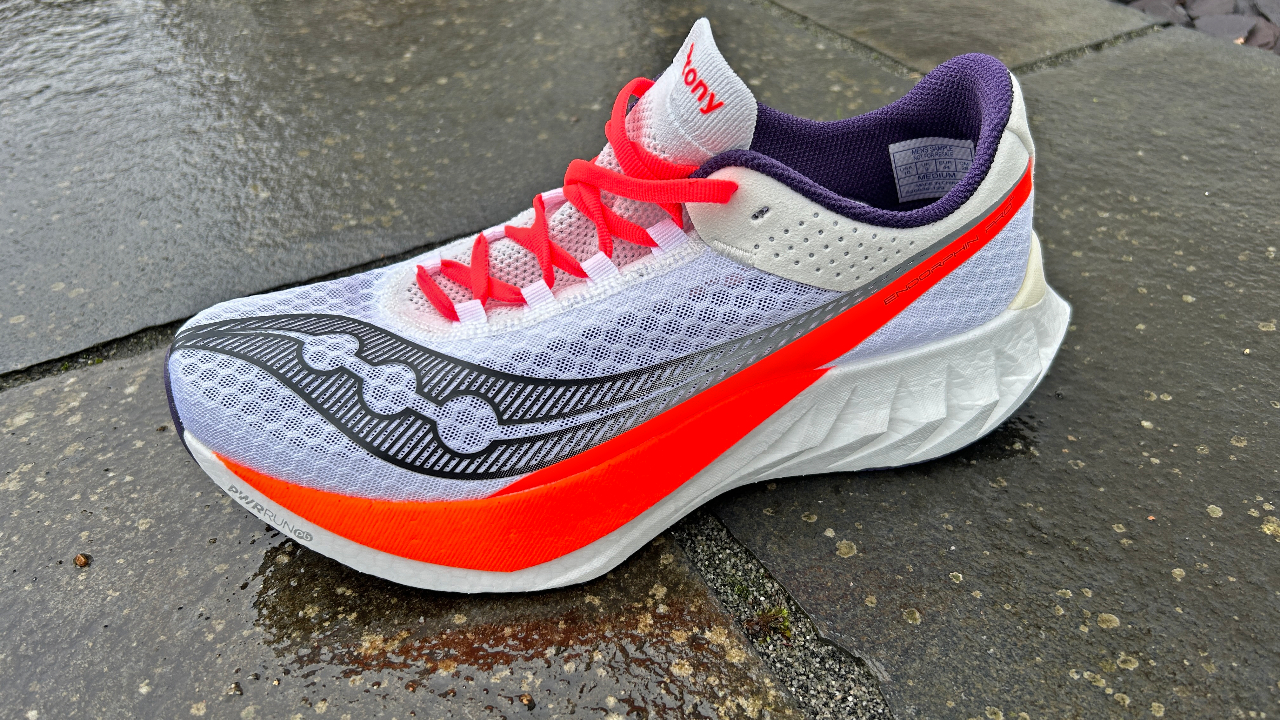
Specifications
Reasons to buy
Reasons to avoid
If you’re new to running I’d avoid using a carbon shoe for your first races, since they’re expensive and can be unstable. However, if you’re a newer runner and decide you want the super-shoe boost, Saucony’s Endorphin Pro 4 is a great option. The ride is still fast, but the speed comes from a rocker that feels natural on the foot. The Pro 4 is more stable and accommodating for slower paces as a result.
It doesn’t have the bouncy feel of some super-shoes, and the presence of the more expensive Endorphin Elite in Saucony’s range may suggest the Pro 4 is a second-tier racer, but I found its performance to be up there with most carbon shoes. I also think most runners will find its ride more enjoyable than the Elite’s, which is pretty harsh for longer events in my experience.
Another reason to consider the Endorphin Pro 4 for your first carbon shoe is that it’s cheaper than many rivals, especially in the US. While I think the Pro 4 is an upgrade on its predecessor, the Endorphin Pro 3 is also still a good option for beginners, and will now be popping up in sales more frequently.
Read more in my Saucony Endorphin Pro 4 review
Best Value
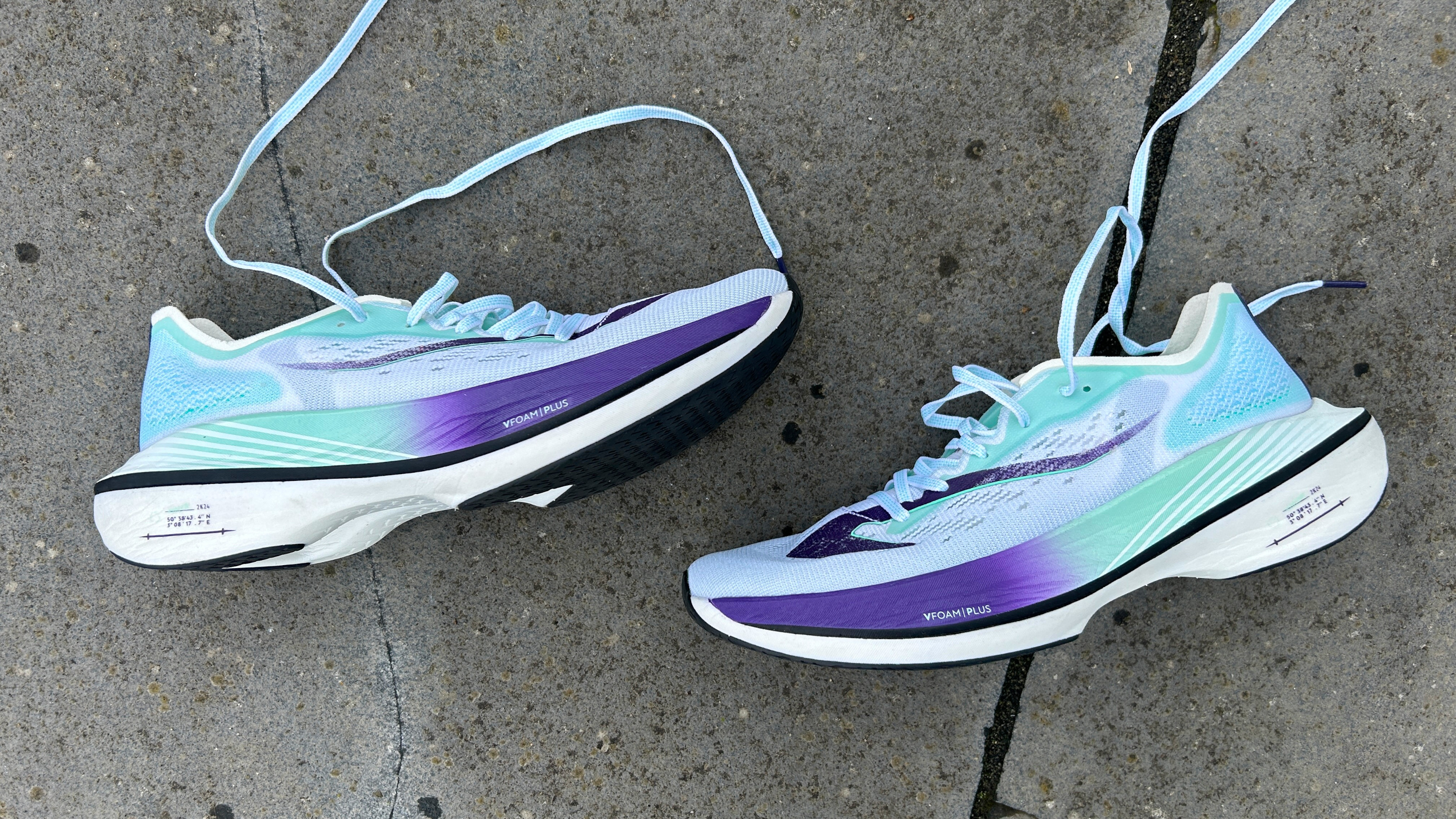
Specifications
Reasons to buy
Reasons to avoid
Decathlon’s first attempt at a carbon racer—the Kiprun KD900X—was more of a durable fast trainer than a super-shoe for racing, but the KD900X LD is a considerable upgrade and worth considering as a cheaper alternative to the top shoes. The main update is the new VFOAM PLUS midsole foam, which is lighter and bouncier than the material used on the KD900X, and Decathlon has also lowered the drop of the KD900X LD to 4mm, adding more foam under the forefoot.
This makes the new shoe a lot more comfortable as well as lighter and springier. The KD900X LD is still not as propulsively fast as the best in the business, but it’s a cheaper alternative that you can use for races of any distance plus training sessions, since it seems a durable shoe.
I didn’t get on well with the upper, though, which has a plastic strip on the side that cut into my right foot on my longest run in the Kiprun KD900X LD. This hasn’t happened on my runs since, but it’s something to be wary of, especially if you are lining up a marathon. It’s also worth noting the KD900X LD comes up long—I’d go half a size down on your normal running shoe.
Read more in my Kiprun KD900X LD review
Best Hoka Shoe
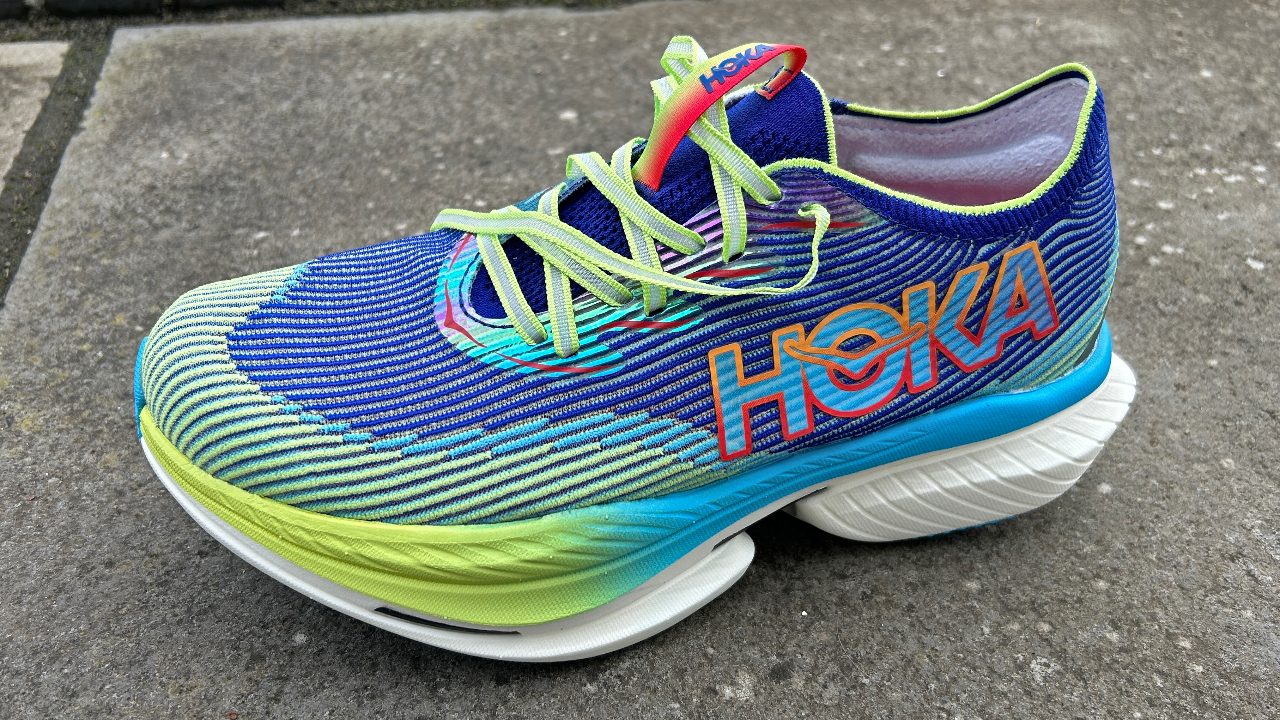
Specifications
Reasons to buy
Reasons to avoid
After lagging behind other brands’ racing options for a couple of years, Hoka now has two excellent carbon shoes in its range. The Hoka Rocket X 2 is lighter and nimbler than the Cielo X1, and a better option if you stick to 5K and 10K races, but the Cielo X1 gets my vote because of its phenomenally bouncy and comfortable ride. It’s one of the best marathon running shoes, rivaling the Nike Alphafly 3 for long-distance speed and comfort, and still works well over shorter distances. The downside of the Cielo X1’s highly cushioned design is that it’s heavier than most carbon shoes but on the run I didn’t feel that the weight held it back, especially at around marathon pace.
Read more in my Hoka Cielo X1 review
Best Adidas Shoe
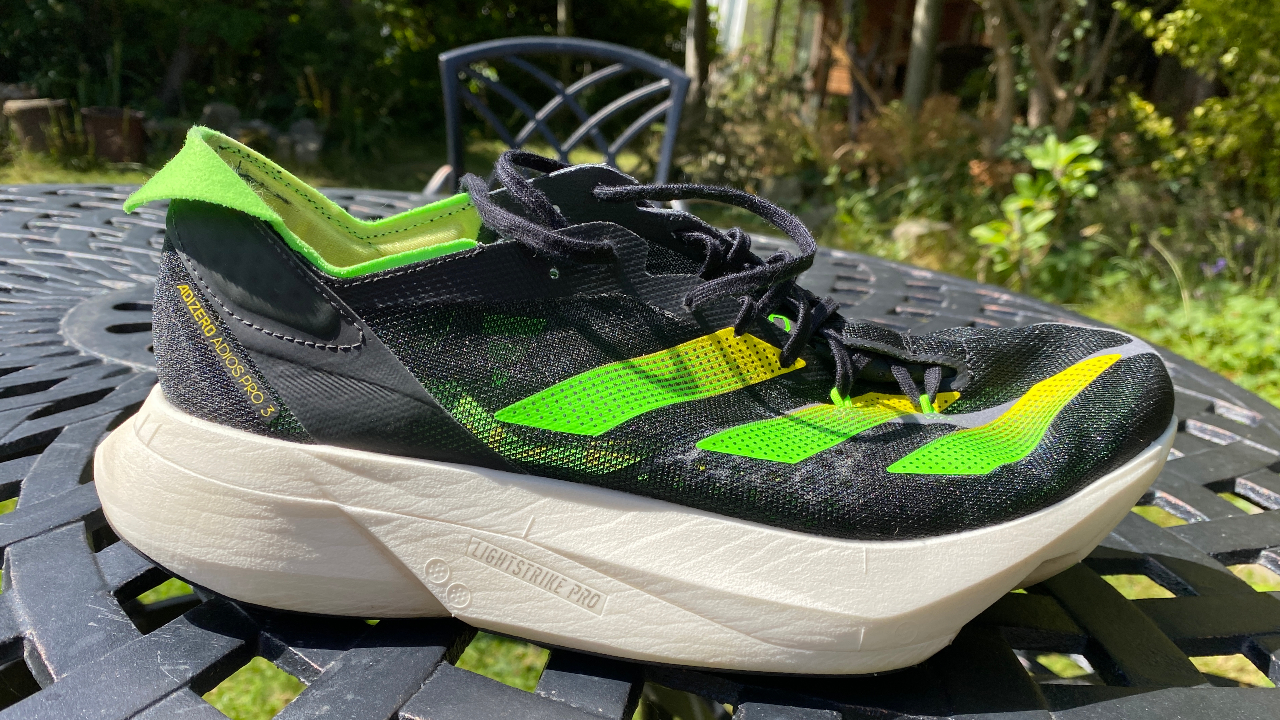
Specifications
Reasons to buy
Reasons to avoid
The Adios Pro 3 is not the top racing shoe in the Adidas range any more. That honor belongs to the Adidas Pro Evo 1, which has already been used by elite athletes to set world records. However, the Pro Evo 1 is $500 in the US and £450 in the UK, it’s not at all durable, and on the rare occasions it is on general sale only a few pairs seem to be available. It’s more of an elite-only shoe, in my mind, whereas the Adios Pro 3 is the best Adidas super-shoe for the mainstream.
It’s a particularly good option for the marathon, with the bouncy and comfortable midsole helping to protect the legs over longer distances, though I found the Pro 3 still felt fast over shorter events. That’s despite being heavier than most other super-shoes on this list. A word of warning on the fit: This shoe can be small and narrow at the forefoot, so try before buying if possible, or go a half size up.
Read more in my Adidas Adizero Adios Pro 3 review
Best Saucony Shoe
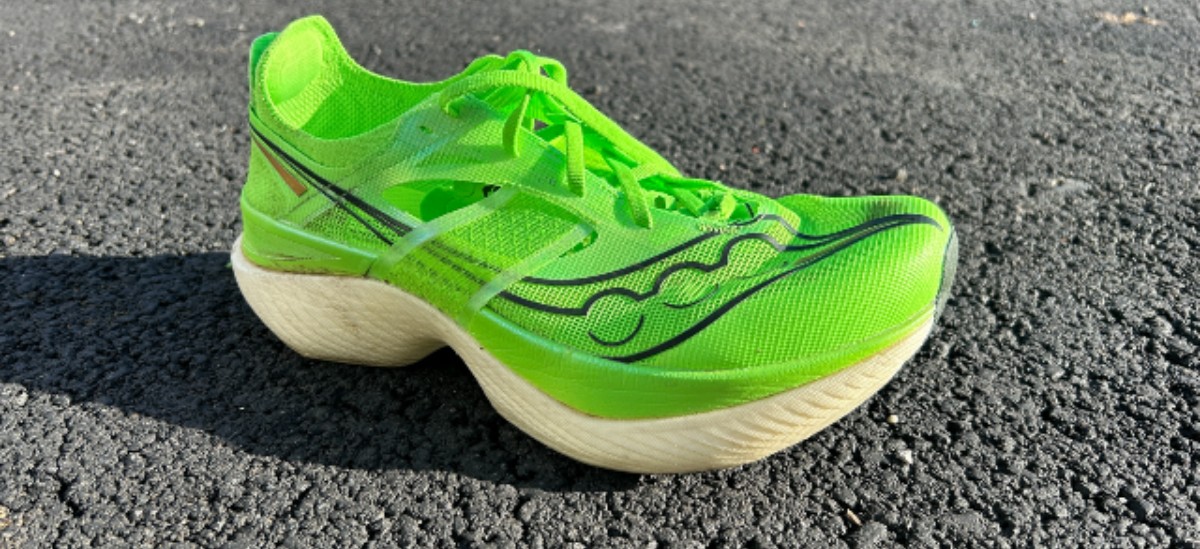
Specifications
Reasons to buy
Reasons to avoid
Saucony’s top racing shoe is firmer and bouncier than the Endorphin Pro 3, with the Speedroll rocker in the Elite creating a faster and more aggressive transition from heel to toe. It’s a remarkable shoe that’s a joy to run fast in, especially over shorter distances, but the ride is harsher than many carbon shoes and may prove too uncomfortable for many runners over the course of a marathon.
The other problem with the Elite is its price. Even for a carbon shoe it’s extraordinarily expensive. You can get brilliant carbon shoes that match the Elite for a lot less, so until it starts cropping up in sales it’s hard to recommend over the likes of the Nike Vaporfly 3 or Asics Metaspeed Sky+.
Read more in my Saucony Endorphin Elite Review
Best New Balance Shoe
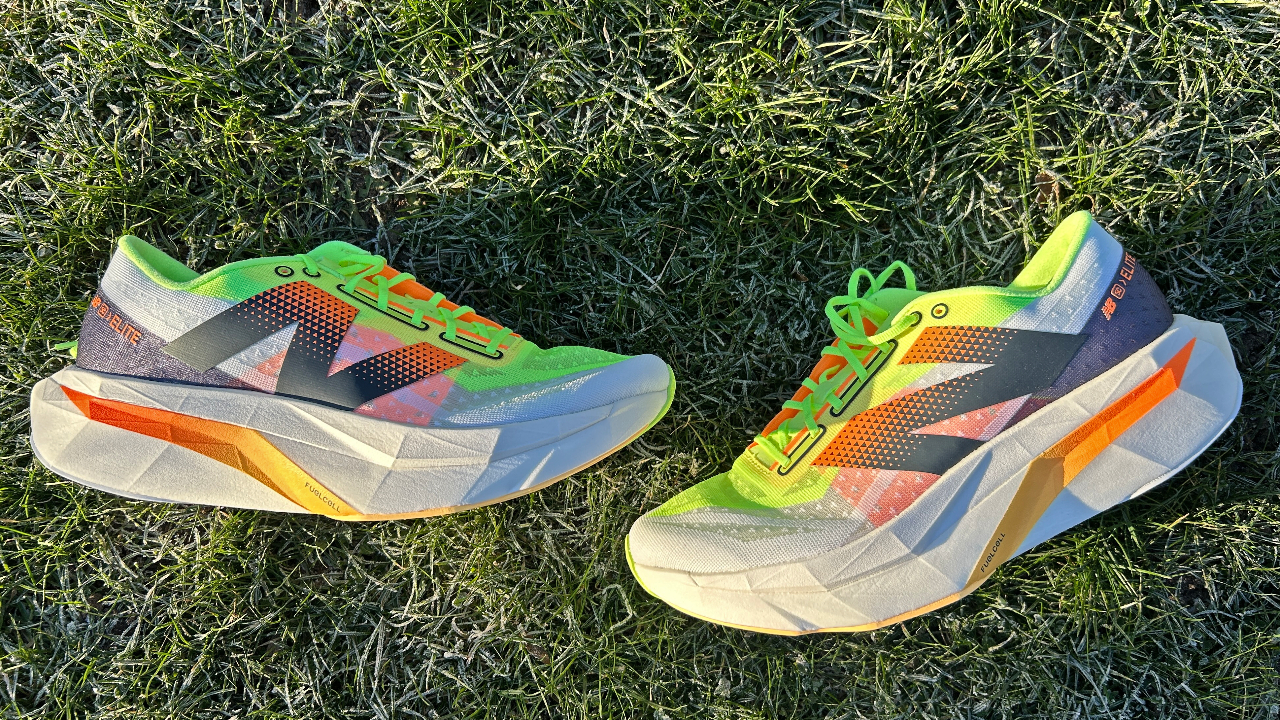
Specifications
Reasons to buy
Reasons to avoid
New Balance has made significant changes to its top racer with each of the four generations released so far, and the SC Elite v4 is the best version of the shoe yet. That's mostly down to the new Peba-based midsole foam, which is bouncier than the materials used on the previous versions of the shoe. As a result the ride is more propulsive and the SC Elite v4 makes it feel easier to hold fast paces over long distances.
I found the SC Elite v4 at its best for long sessions during my testing and it's one I consider more of a marathon-focused shoe overall, since it's a bit heavy and not as nimble and aggressive as some rival shoes. It's still a speedy option for shorter events and interval sessions of course, but the forthcoming SC Pacer 2 might be the best New Balance shoe for 5K up to half marathon races when it launches later in 2024.
Best Puma Shoe

Specifications
Reasons to buy
Reasons to avoid
Puma has more carbon shoes in its line-up than most brands. The Fast-R 2 is described as the propulsive racing option for powerful runners, while the Deviate Nitro Elite 2 is a lighter shoe that feels a bit more natural, if less bouncy, and the Fast-FWD is a more aggressive shoe designed for 5K and 10K events.
Of the trio, the Deviate Nitro Elite 2 is the best value and one that will work for lots of runners, but for flat-out speed the Fast-R 2 impressed me the most. It's a strange-looking shoe, with its decoupled midsole and carbon plate that extends beyond the front of the shoe, but it delivers an incredibly springy and fast ride. It's a little heavy and the unusual ride will suit some runners better than others, but its lively bounce makes the Fast-R 2 an excellent marathon racing option in particular.
Best Mizuno Shoe
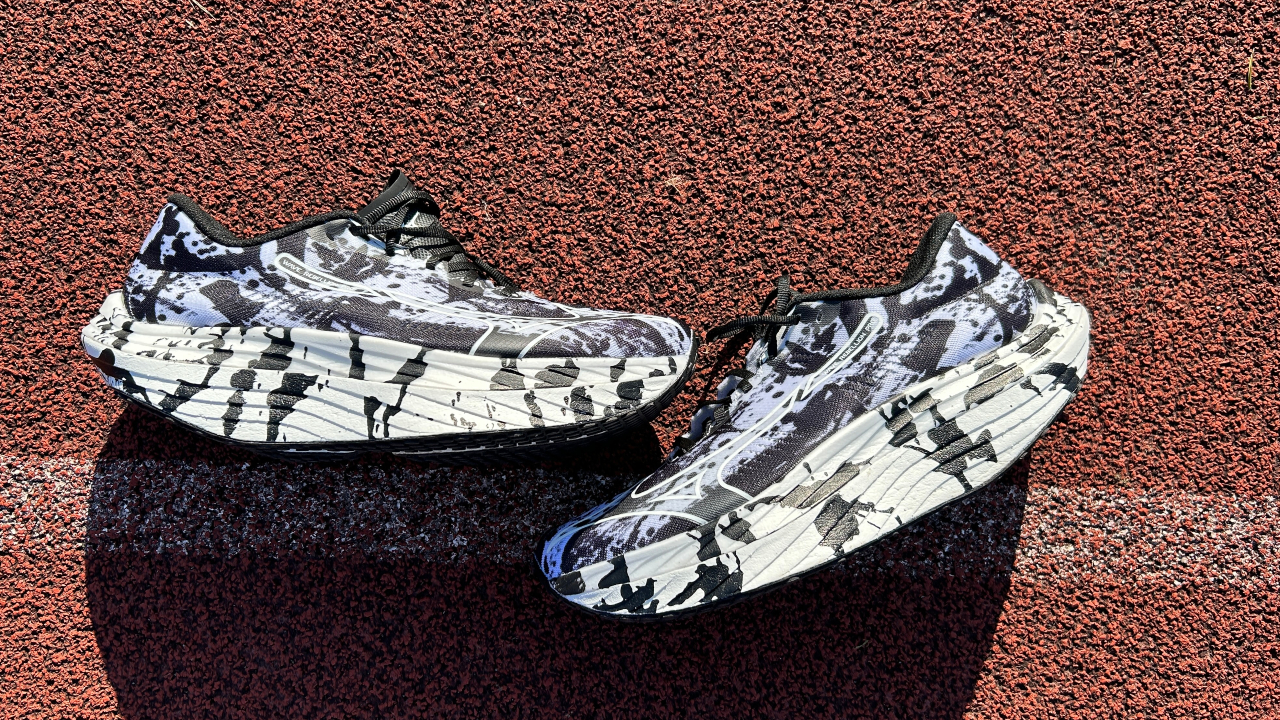
Specifications
Reasons to buy
Reasons to avoid
There are a lot of carbon shoes available and most follow a similar design pattern, which means it takes something special to stand out. The Mizuno Wave Rebellion Pro has that something special. A unique design that delivers a bouncy, propulsive and comfortable ride and will help you speed around your races.
The heel-less rocker design works best for mid-forefoot-strikers, but even as a heel-striker I loved using it for fast runs of any length, even if it’s primarily pitched as a marathon shoe. It worked a treat during a 5K race in my testing. In the UK, the Wave Rebellion Pro is also a relative bargain with its low list price, and it’s often in sales with the second version of the shoe on the way soon.
Read more in my Mizuno Wave Rebellion Pro review
Best On Shoe
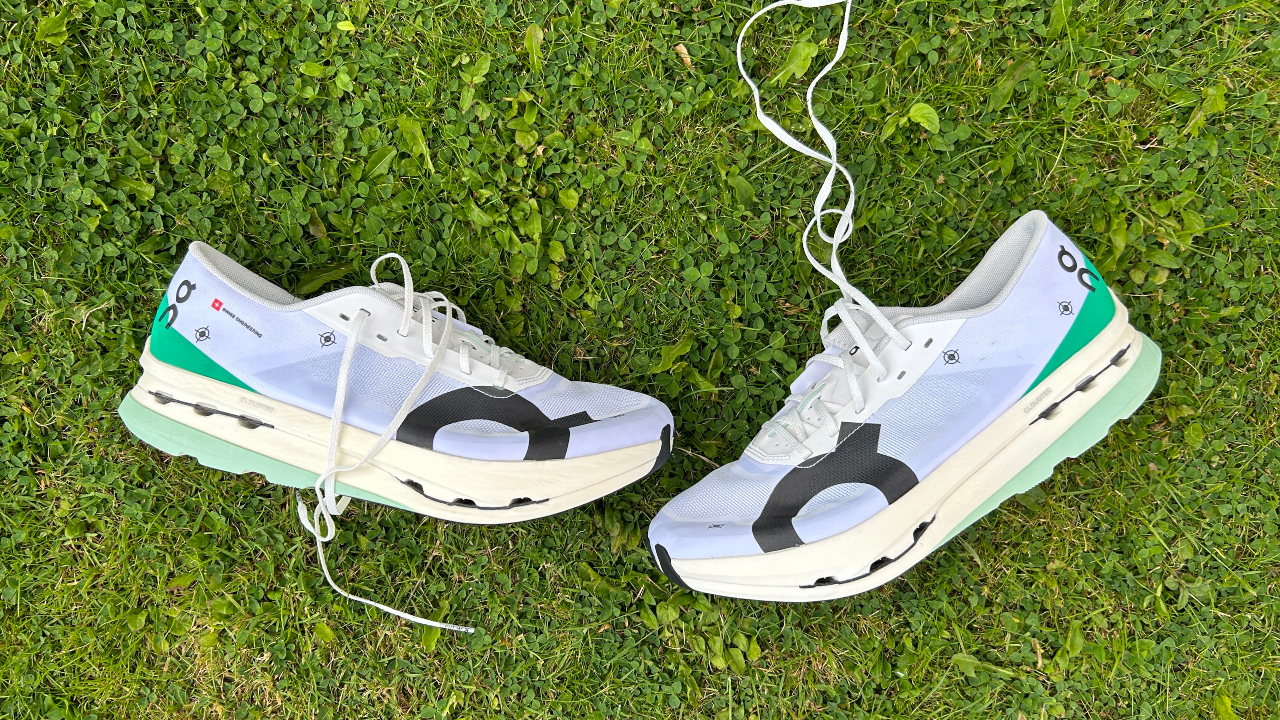
Specifications
Reasons to buy
Reasons to avoid
The Cloudboom Echo 3 is a big leap forward for On’s super-shoes, and the first from the Swiss brand that I consider competitive with the best on the market. The new Peba-based midsole foam is springy and the pronounced rocker on the shoe—in combination with the carbon plate—provides a fast and propulsive ride for races of any distance.
The performance is excellent, though I believe the Cloudboom Echo 3 may get lost in the crowded carbon shoe market. This is due to both its high price and the fact that I’ve seen more wear on its outsole after 30 miles of running than on most super-shoes. I think it’s a great shoe, but I prefer options like the Nike Vaporfly 3, Adidas Adizero Adios Pro 3 and Asics Metaspeed Sky+—and they are all cheaper than the Cloudboom Echo 3.
Read more in my On Cloudboom Echo 3 review
Best Salomon Shoe
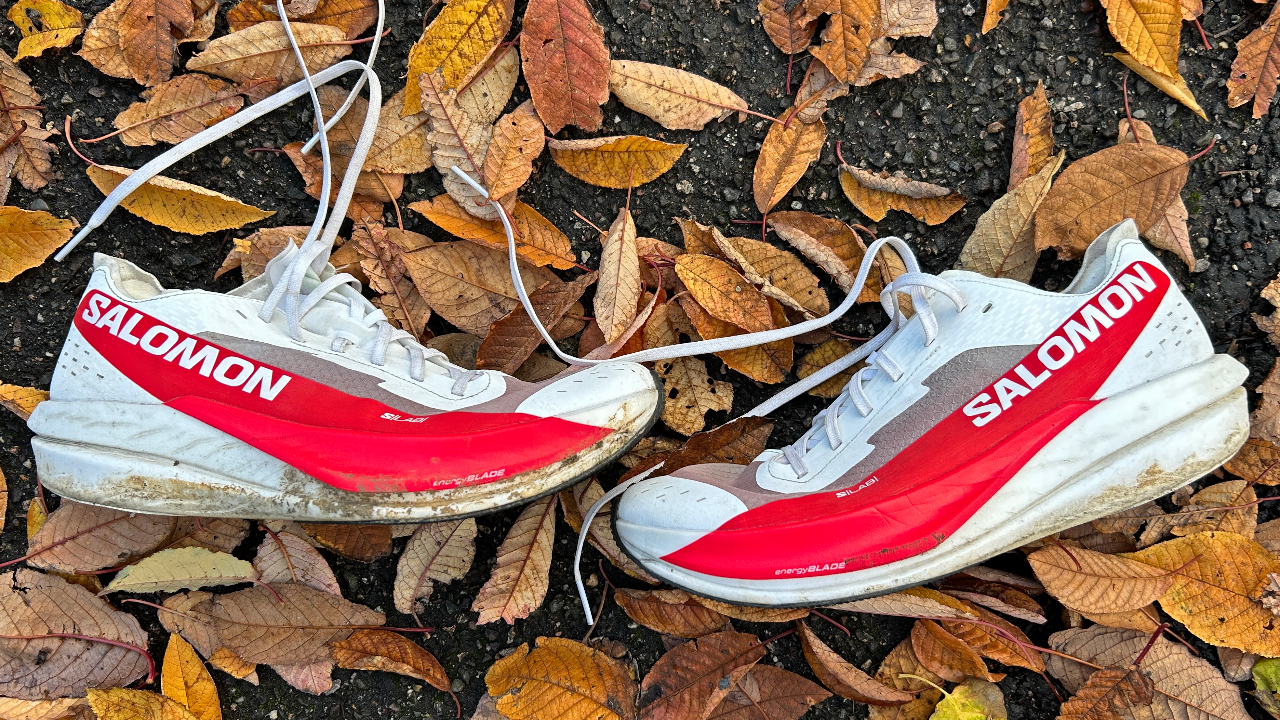
Specifications
Reasons to buy
Reasons to avoid
The S/Lab Phantasm 2 is Salomon’s best road-racing shoe, and the first carbon shoe from the brand that rivals the performance of the top super-shoes. To achieve this Salomon has introduced a Peba-based midsole foam to its range for the first time. This delivers a bouncy, fast ride that’s comfortable for longer events and hard training sessions, while being light enough to make the shoe suitable for shorter races too.
Ahead of my review, I used the S/Lab Phantasm 2 for a range of training sessions on the road and track, as well as a 5K race, and it impressed me every time. My main qualm is that the grip isn’t particularly good on wet paved surfaces, which is surprising given Salomon’s trail heritage. The price is also high given that Salomon has not been a go-to brand for road runners, and it makes it hard to recommend buying the shoe when you can get the Vaporfly and other more established options for less.
Read more in my Salomon S/Lab Phantasm 2 review
More Road Running Shoes
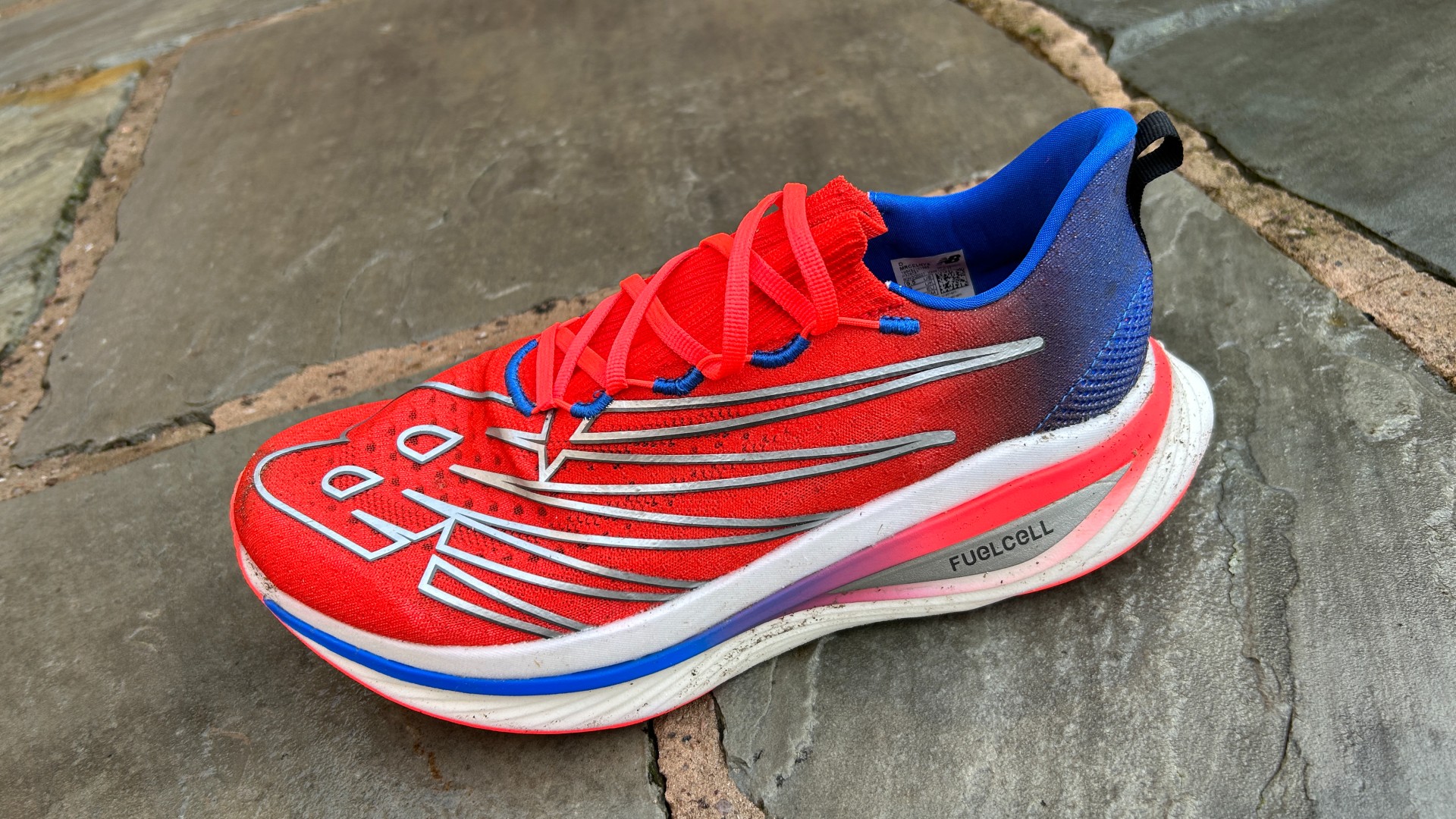
Specifications
Reasons to buy
Reasons to avoid
The SC Elite V3 is billed as the long-distance racing shoe in New Balance’s line-up, while the SuperComp Pacer is the low-stack, short-distance option. However, the SC Elite V3 is the only true super-shoe in the line-up and would be our pick from New Balance for any distance.
With the third version of the shoe New Balance has created a faster, more aggressive ride thanks to the pronounced rocker shape. The SC Elite V3 is a great racing option for events of any distance – it feels nimbler and faster than the RC Elite V2 over 5K or 10K and is still cushioned enough for the marathon.
Read more in my New Balance FuelCell SC Elite V3 review
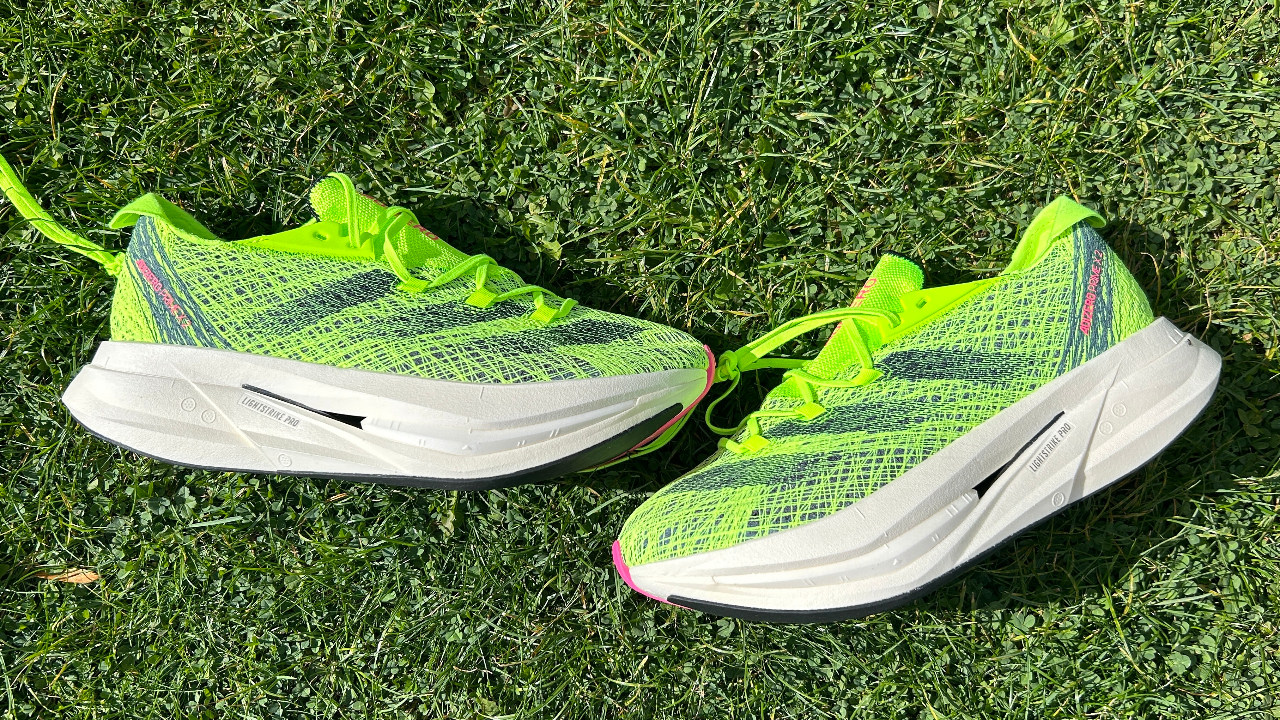
Specifications
Reasons to buy
Reasons to avoid
The Adidas Prime X Strung 2’s 50mm stack height technically means it breaches the World Athletics regulations for road racing, though this is unlikely to be a problem unless you are an elite athlete or at least unusually fast for an amateur. However, I found the Prime X Strung 2 to be at its best for training runs, rather than racing, because it’s so much heavier than top racers like the Vaporfly, or the Adios Pro 3.
It was great fun to use for a range of training runs though, delivering the bounciest ride I’ve experienced thanks to the high stack and two carbon-infused plates in its midsole. It’s also still fast despite its weight, and can be used for tempo and track runs, as well as cruising through long runs. The Prime X Strung 2 is more stable than the original, which makes it better suited to using for daily training runs, though it is still a little wobbly because of the high stack height.
Read more in my Adidas Adizero Prime X 2 Strung review
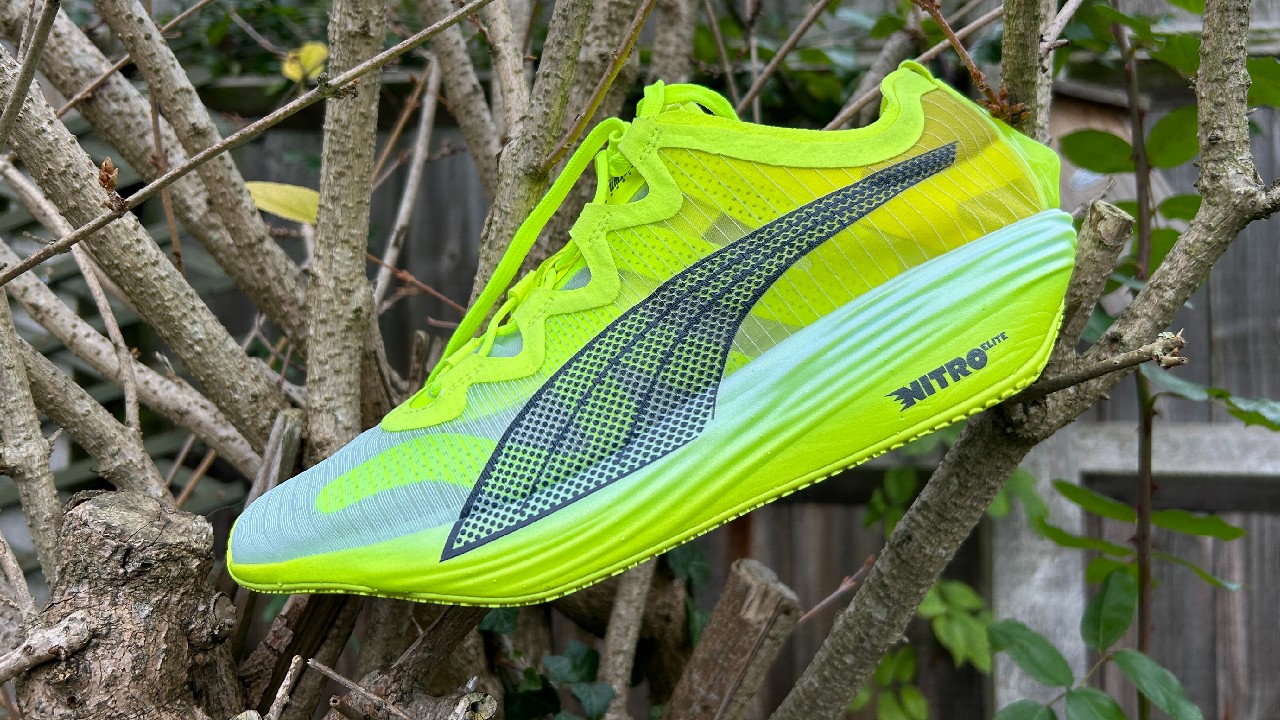
Specifications
Reasons to buy
Reasons to avoid
The Puma Fast-FWD Nitro Elite is built for short-distance events – most runners won’t enjoy racing more than 10K in it. That’s because of the unique design which pushes you to land on your midfoot before the aggressive rocker flings you forwards onto your toes. It feels great when you’re running well, but the ride lacks the support you need for longer events.
We found that even in short races the Fast-FWD could start to feel awkward at times, but when you’re in control and feeling good it’s a very efficient racing shoe for 5K and 10K. The price is high for a fairly niche shoe, however, and other carbon shoes match the performance of the Fast-FWD over short distances while being suitable for longer races too.
Read more in my Puma Fast-FWD Nitro Elite review
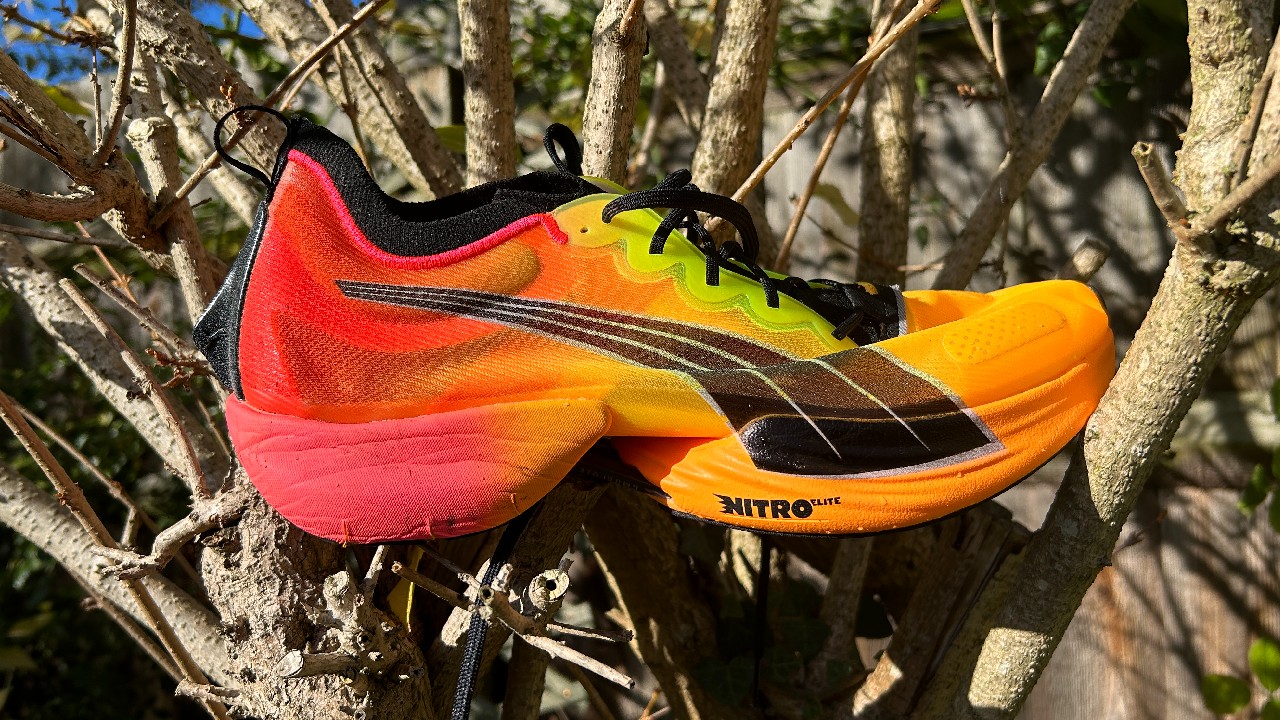
Specifications
Reasons to buy
Reasons to avoid
The Fast-R is a pretty extraordinary-looking shoe that showcases the variety of tech Puma has crammed into it to make a top-notch carbon racer. The decoupled midsole reveals the carbon plate running through, and the shoe uses two foams – a firm EVA foam at the heel helps you to transition rapidly to the softer, PEBA-based Nitro Elite foam under the forefoot. In this shoe Puma has made the Nitro Elite using castor bean oil for performance reasons but it’s also sustainable, which is always a bonus.
While the Fast-R feels awkward at slower paces it does come alive when running fast, and the transition from heel to toe is undoubtedly rapid. We enjoyed racing a half marathon in the shoe but that might be the furthest distance we’d use it for, since it’s firmer than other super-shoes that would be better for the marathon. One downside here is that the Fast-R is more expensive and heavier than the Deviate Nitro Elite, and we reckon that is still the pick of the Puma carbon shoes to try.
Read more in my Puma Fast-R Nitro Elite review
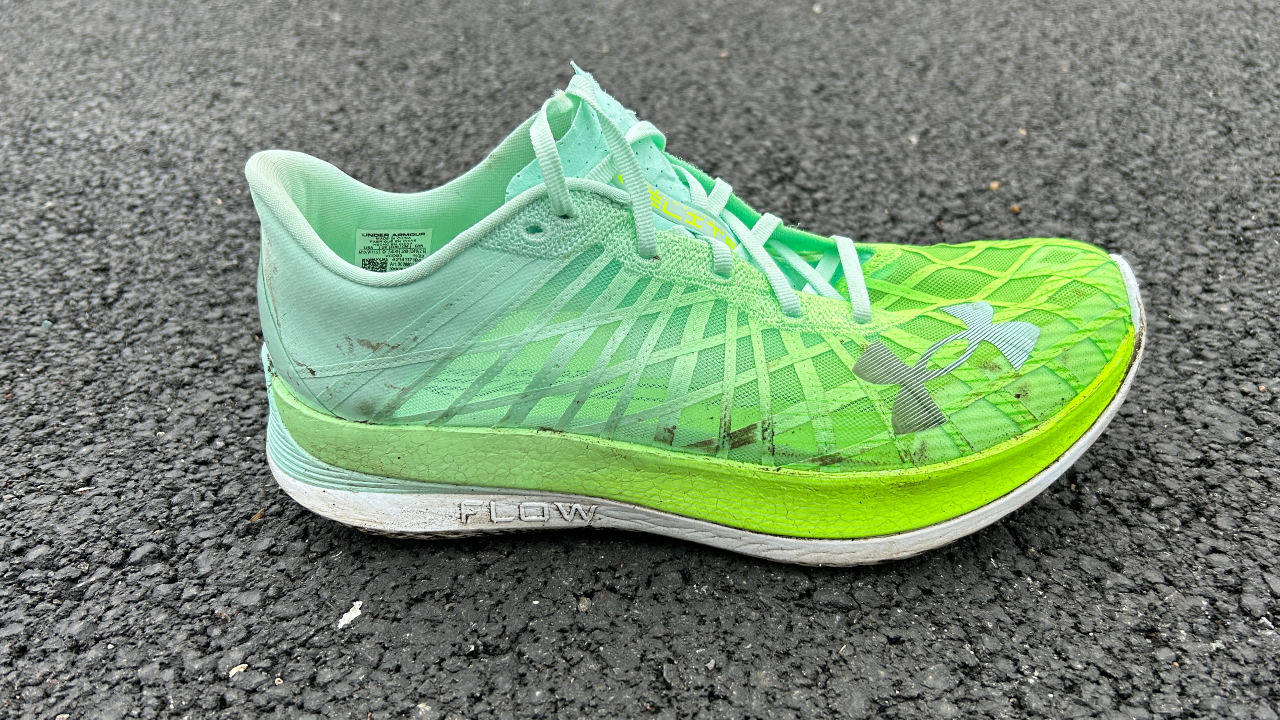
Specifications
Reasons to buy
Reasons to avoid
Under Armour’s first stab at a carbon super-shoe feels more like a trainer/racer, with a stable and fast ride that works well for a range of training runs but lacks the propulsive punch of the best racing shoes.
The dual-density midsole has a layer of PEBAX foam on top and a gas-injected (supercritical) version of Under Armour’s Flow underneath, plus a TPE insole, though all that cushioning doesn’t translate to a particularly soft or springy ride. I found it harsh to use for longer, hard runs, and it’s also heavier than many carbon shoes. It could be one to test as a fast training shoe within a rotation at a much lower price, but at its RRP the Velociti Elite is outgunned for racing by its rivals.
Read more in my Under Armour Flow Velociti Elite review

Specifications
Reasons to buy
Reasons to avoid
The Magic Speed 3 is billed as the fast training partner to Asics’s full super-shoes, the Metaspeed Sky+ and Edge+, but stands on its own as a cheaper carbon plate shoe to consider. Its RRP is well below the price of Asics’s top shoes, and most super-shoes, but the Magic Speed 3 delivers a high level of performance for fast training sessions and races.
In the midsole there’s a carbon plate sandwiching two layers of Asics’s FF Blast+ foam, which is not as bouncy as the FF Turbo used in the Metaspeed shoes, but still light and energetic enough for a fast ride. The Magic Speed 3 is also less cushioned than the Metaspeed shoes, and over longer races I’d prefer a super-shoe with more foam under the forefoot in particular, but for shorter events it’s not a big step down from more expensive shoes.
One problem the Magic Speed 3 has is that excellent older carbon shoes, such as the Nike Vaporfly 2, are often available for around the same price and they are better options for fast running. That said, the Magic Speed 3 will eventually pop up in sales itself, and if it drops to near $100/£100 it’s a fantastic budget racing option.
Read more in my Asics Magic Speed 3 review
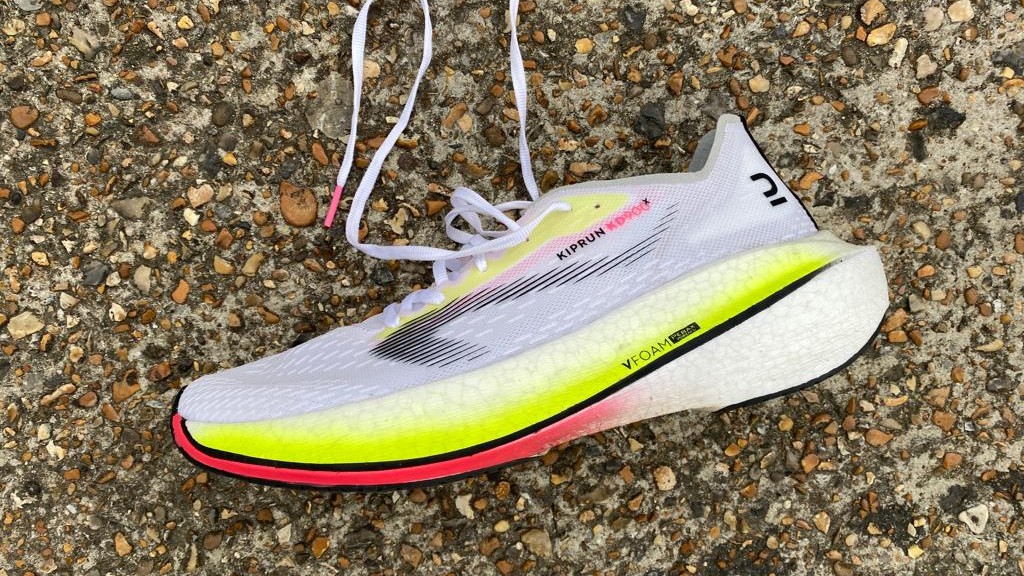
Kiprun KD900X
Specifications
Reasons to buy
Reasons to avoid
Decathlon’s first carbon-plate super-shoe has the key ingredients you expect, including a full-length plate and a PEBA-based midsole foam. Where it strays from the classic template is that it’s much cheaper than most carbon shoes, and more durable – Decathlon says the Kiprun KD900X should last 1000km.
The ride is pretty firm, especially at first, but does soften a bit after a couple of runs, and the KD900X doesn’t have the dramatic squish and bounce of the best carbon racers. However, it’s still undeniably quick, and the firmer ride makes it more stable than other super-shoes. It’s one we’d mark down as a great trainer/racer, rather than a top-class racer that’s ready to take on the best in the business.
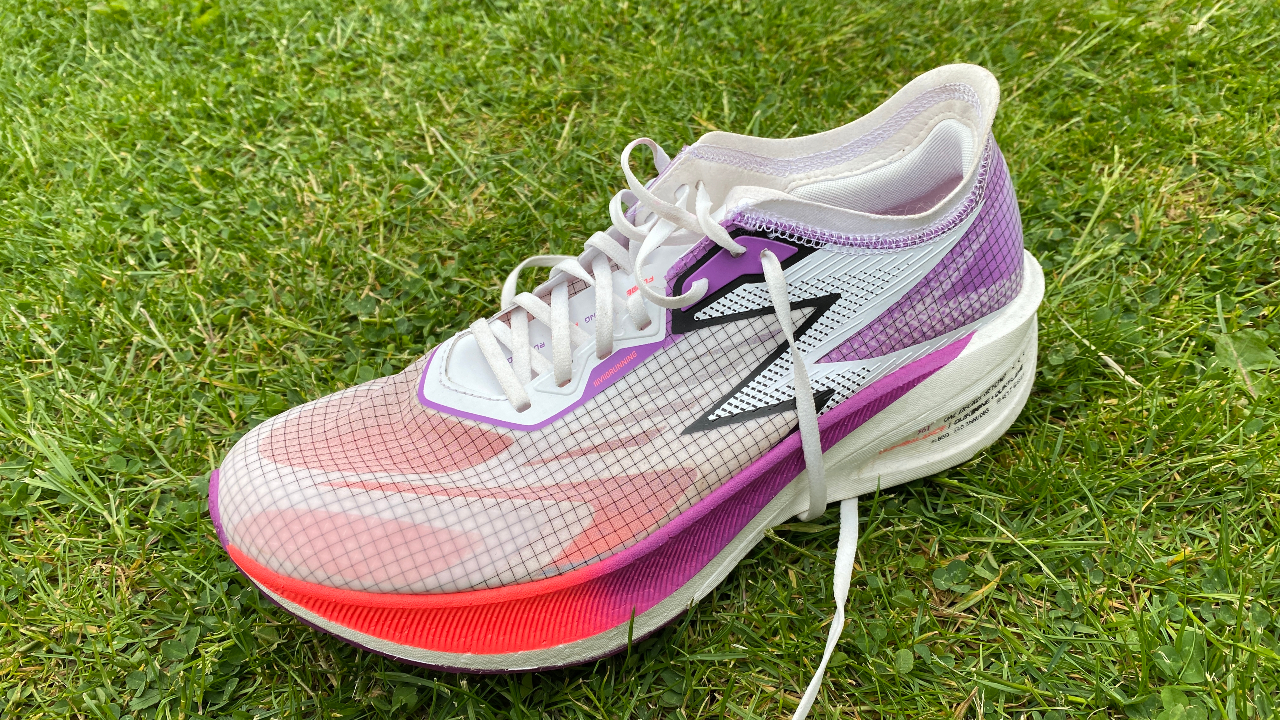
Specifications
Reasons to buy
Reasons to avoid
One of the best budget carbon shoes, the 361° Flame is modelled on the Nike Vaporfly’s design. It can’t match the performance of Nike’s super-shoe, but the Flame holds its own against other shoes around its price.
The midsole is made of a polyurethane foam called QU!KFLAME, which is firmer than many rival foams in carbon shoes though still comfortable and responsive, if not as springy as materials like ZoomX of Asics’s FF Turbo. The Flame also grips well in the wet and, given the lower price, works well either as your racing shoe or as a fast training shoe to pair with something like the Vaporfly.
Read more in my 361° Flame review
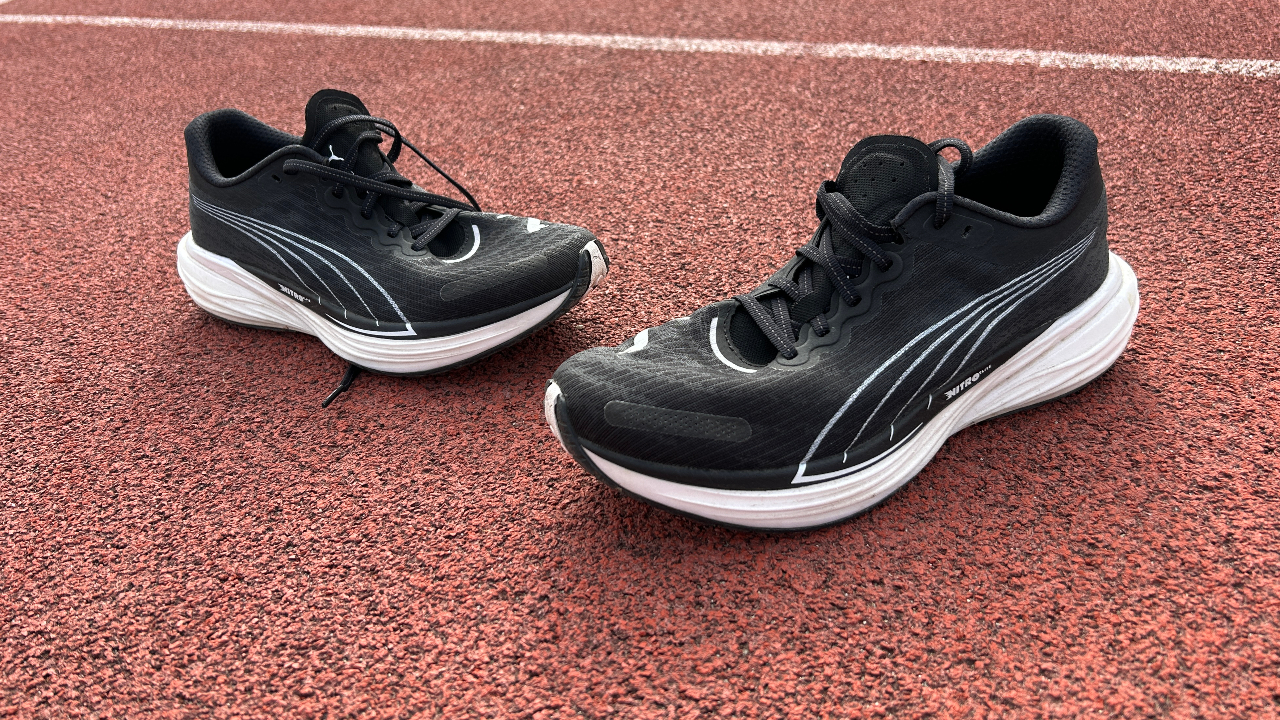
Specifications
Reasons to buy
Reasons to avoid
The Deviate Nitro 2 is the plated training shoe in Puma’s range, and it uses a mix of 70% carbon and 30% TPU in its plate so it’s not as stiff and firm as a full carbon one. That makes it better for regular use, and the Nitro 2 is a great daily trainer that’s comfortable enough for easy runs while still having a little extra pop for fast workouts, even if it doesn’t feel as bouncy and propulsive as the top super-shoes.
One of the shoe’s best features is its PUMAGRIP outsole, which grips well on wet roads and also works on light trails like park paths and canal towpaths. That outsole does add weight to the shoe and marks it out as more of a trainer than a racing option, but it’s great to be able to take your daily runs off-road when you fancy it without worrying about grip.
Read more in my Puma Deviate Nitro Elite 2 review

Specifications
Reasons to buy
Reasons to avoid
Altra has earned a loyal following among runners seeking a foot-shaped toe box and a zero-drop midsole design to promote a more natural gait. The Vanish Carbon is the brand’s first attempt at a super-shoe, with a three-quarter-length Carbitex plate in the midsole, which is made of Altra’s lightweight, response Ego Pro foam.
All the ingredients for a super-shoe are there, with an unusual zero drop design that doesn’t feel all that flat thanks to the aggressive toe taper, which provides a rolling sensation to your toe-off. The Vanish Carbon is an effective shoe that can handle a range of training as well as races, but the midsole lacks the propulsive feel of the best carbon shoes; at this price it’s hard to recommend it over the likes of the Vaporfly, especially since the outsole wears down worryingly quickly.
Read more in my Altra Vanish Carbon review
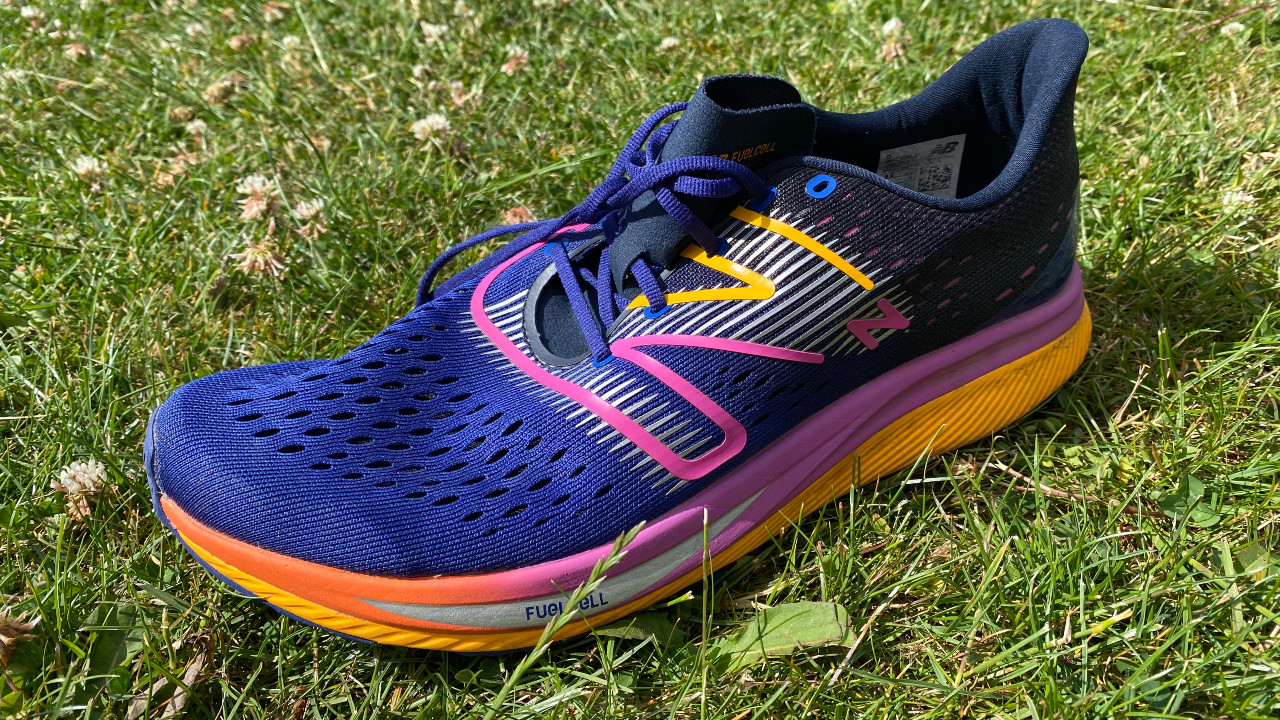
Specifications
Reasons to buy
Reasons to avoid
The Pacer is the first shoe from New Balance’s new SuperComp line, which will include a carbon plate training shoe and a marathon racer. The Pacer is designed for racing 5K to half-marathon distances, and has a lower stack height in order to be more nimble and lightweight for those shorter events.
It has a full carbon plate in the midsole and New Balance’s springy FuelCell foam, but it doesn’t feel as soft as the more cushioned RC Elite 2. The Pacer is a great shoe and built to compete with the likes of the Takumi Sen 8 and Nike Streakfly in the short distance racer category; however, we’d still generally prefer to pull on a high stack super-shoe, even for 5Ks.
Read more in my New Balance FuelCell SuperComp Pacer review
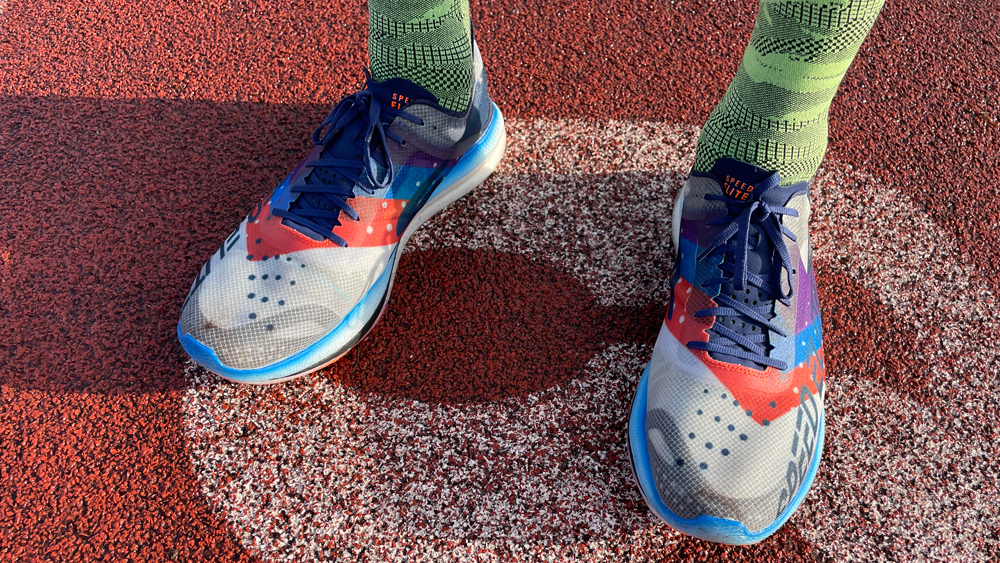
Specifications
Reasons to buy
Reasons to avoid
The Speed Elite Hyper sits between old-school racing flats and today’s high-stack super shoes, but feels more like the former underfoot. The stack height is 23mm, which is low enough to use for track races over 800m and a far cry from the 40mm limit many carbon shoes bump up against.
There is a carbon plate but only under the forefoot, which stops the ride being too harsh despite the relative lack of foam. That foam is Skechers’ Hyperburst material, which is a nitrogen and carbon dioxide-infused EVA. It’s very light – the Speed Elite weighs just 180g in a UK 9 – and has plenty of pop, but feels firmer than the soft foams you’ll find in shoes like the Nike Vaporfly and New Balance RC Elite v2.
While it will be too firm and minimal for most to use for a half marathon or marathon, the Speed Elite Hyper is a lightweight option for short races and speed sessions.
Read more in my Skechers GoRun Speed Elite Hyper review
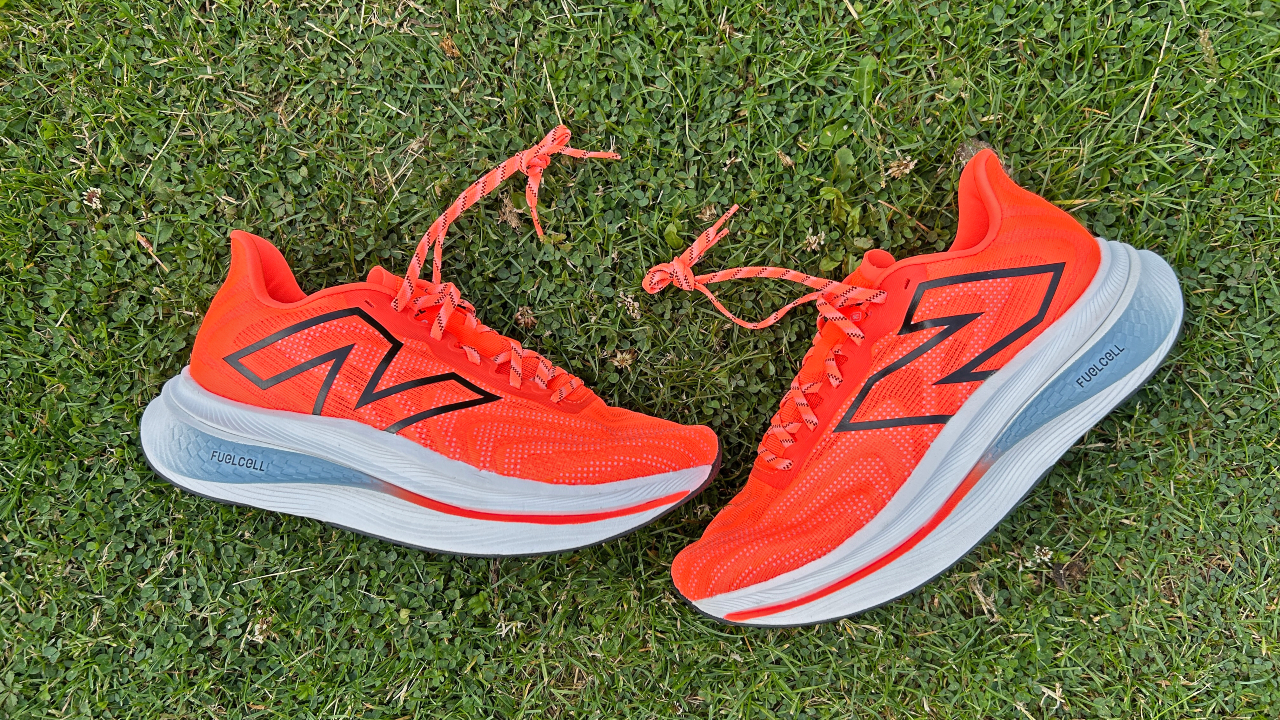
Specifications
Reasons to buy
Reasons to avoid
The New Balance’s plated training shoe has similar specifications to the SC Elite v3 racer, with two layers of FuelCell foam sandwiching the carbon plate. However, the SC Trainer v2 is geared towards daily training, and I found the ride surprisingly sluggish at times when attempting faster runs in the shoe.
The SC Trainer v2 has a lower stack and a less bouncy but more stable ride than its predecessor, which makes it better for easy runs, though given the high price and the tech in its midsole, the shoe falls short of the performance I’d expect from a super-trainer.
Read more in my New Balance FuelCell SuperComp Trainer V2 review
Best Brooks Shoe
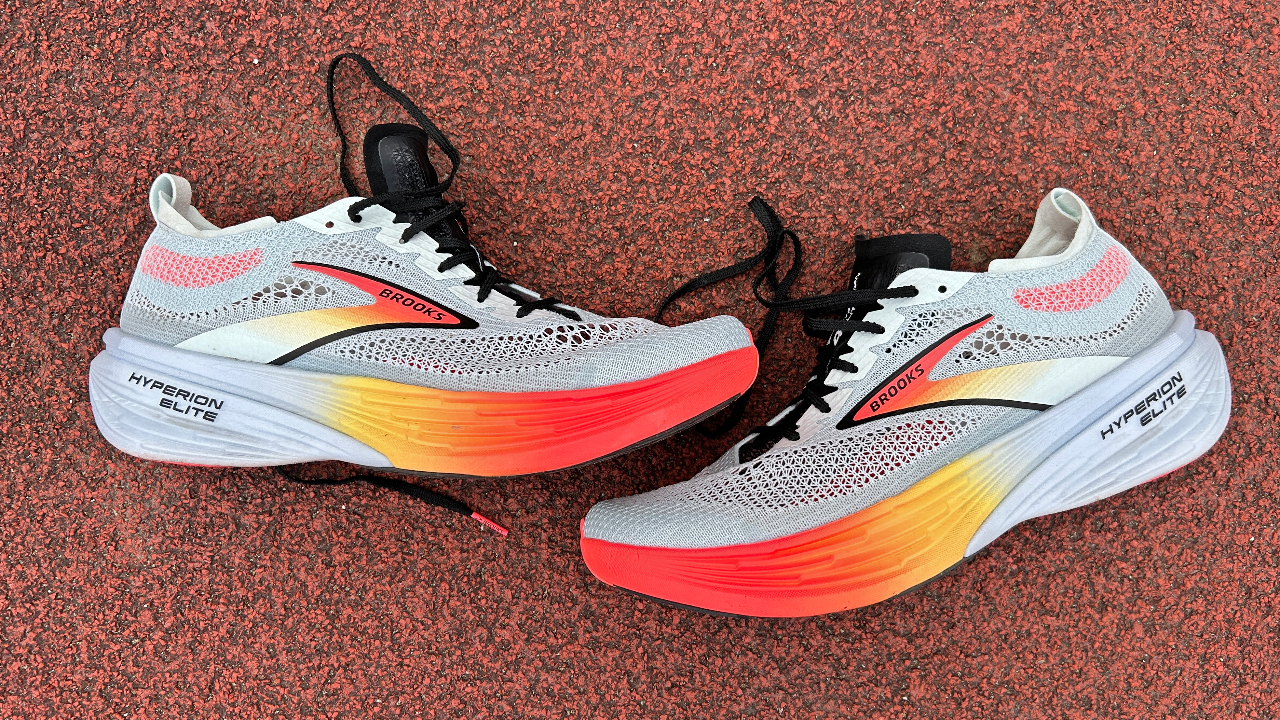
Specifications
Reasons to buy
Reasons to avoid
Brooks is probably the biggest brand on the market that’s yet to deliver a true top-class carbon plate racing shoe. This is mostly because it doesn’t use a springy Peba-based foam in its midsole. That said, the Hyperion Elite 4 is Brooks’s best racing shoe yet, with a higher stack and a lighter, softer design than in previous versions.
Sticking with a nitrogen-infused EVA foam might be the reason the Hyperion Elite 4 is not as propulsive as other racers, but the DNA Flash v2 midsole foam is more stable than many super-shoes, and some will like its firmer feel as a result. It’s not as comfortable over long distances, though, and while I enjoyed using the Elite 4 for some hard training runs there are simply too many superior carbon shoes available at a similar price to recommend it, unless you’re set on sticking with a Brooks shoe for your racing.
Read more in my Brooks Hyperion Elite 4 review
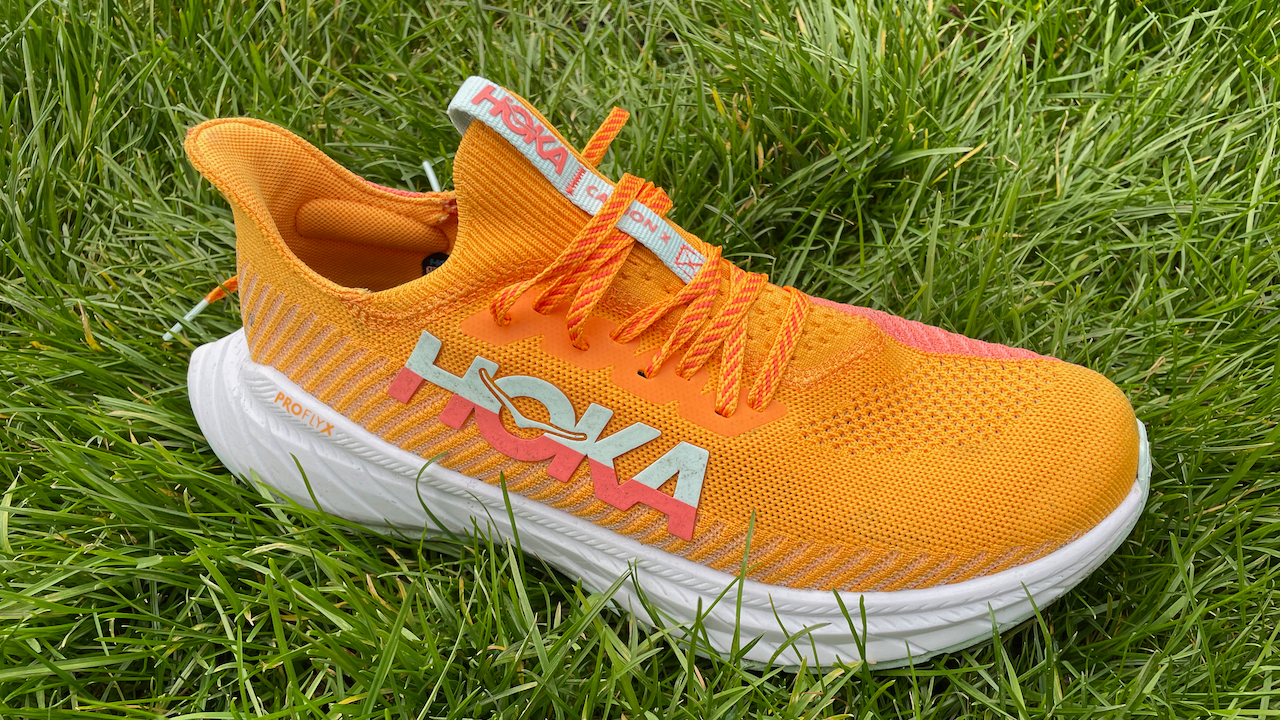
Specifications
Reasons to buy
Reasons to avoid
The third version of Hoka’s long-distance carbon racing shoe uses a slightly softer and bouncier midsole foam, improving the ride. It’s also more stable and comfortable to use for regular training than many carbon super-shoes. However, it lacks the top-end speed of the best carbon racing shoes, and wouldn’t be our pick for races up to marathon distance, though it might be better suited to running road ultramarathons thanks to its more stable design. One criticism we do have of the latest version of the shoe is that the fit of the new knit upper can be a little sloppy when running fast, but overall the X3 is an upgrade on the X2.
Read more in my Hoka Carbon X3 review
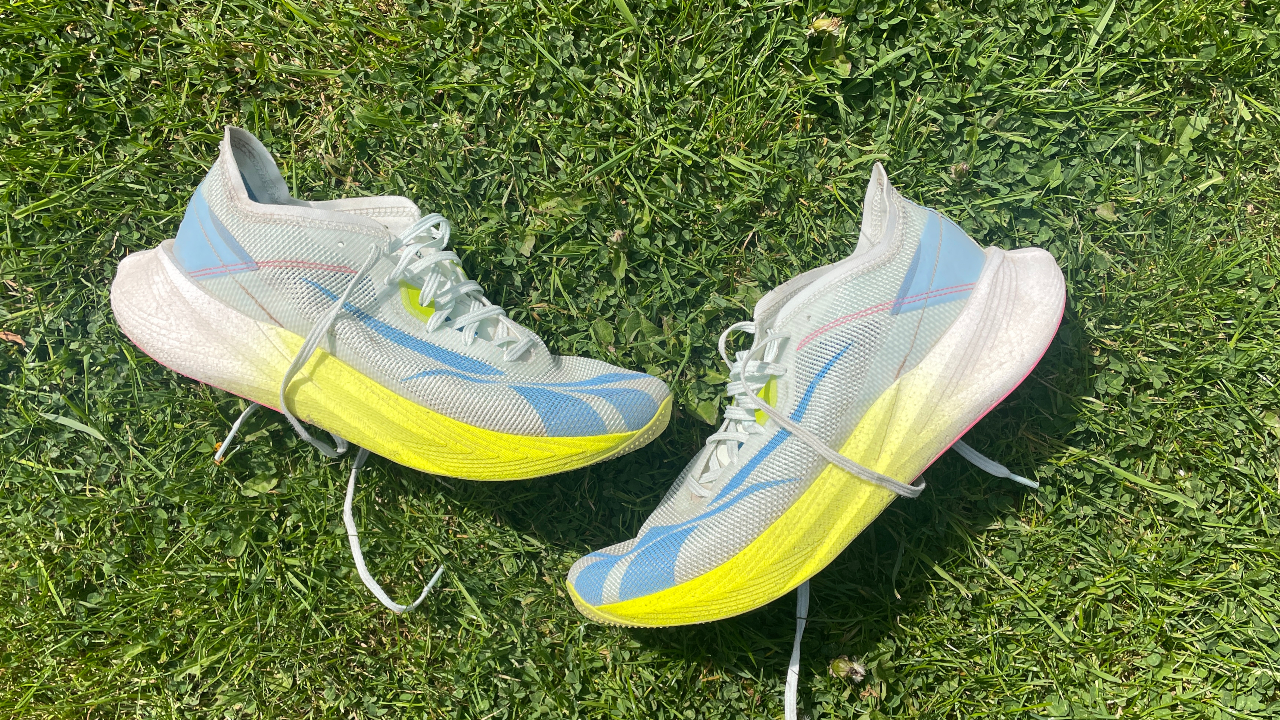
Specifications
Reasons to buy
Reasons to avoid
Reebok makes one of the best value running shoes available: the Floatride Energy 4, which is a superb daily trainer that costs $110/£75. We were hoping the Floatride Energy X would be similarly impressive in offering great value as a carbon plate shoe, but unfortunately it fell short of our expectations.
While the Energy X is comfortable and has a smooth ride with a little extra pop coming from the plate under the forefoot, it’s a bit heavy and the Floatride midsole foam lacks the bounce to make up for that weight.
Read more in my Reebok Floatride Energy X review
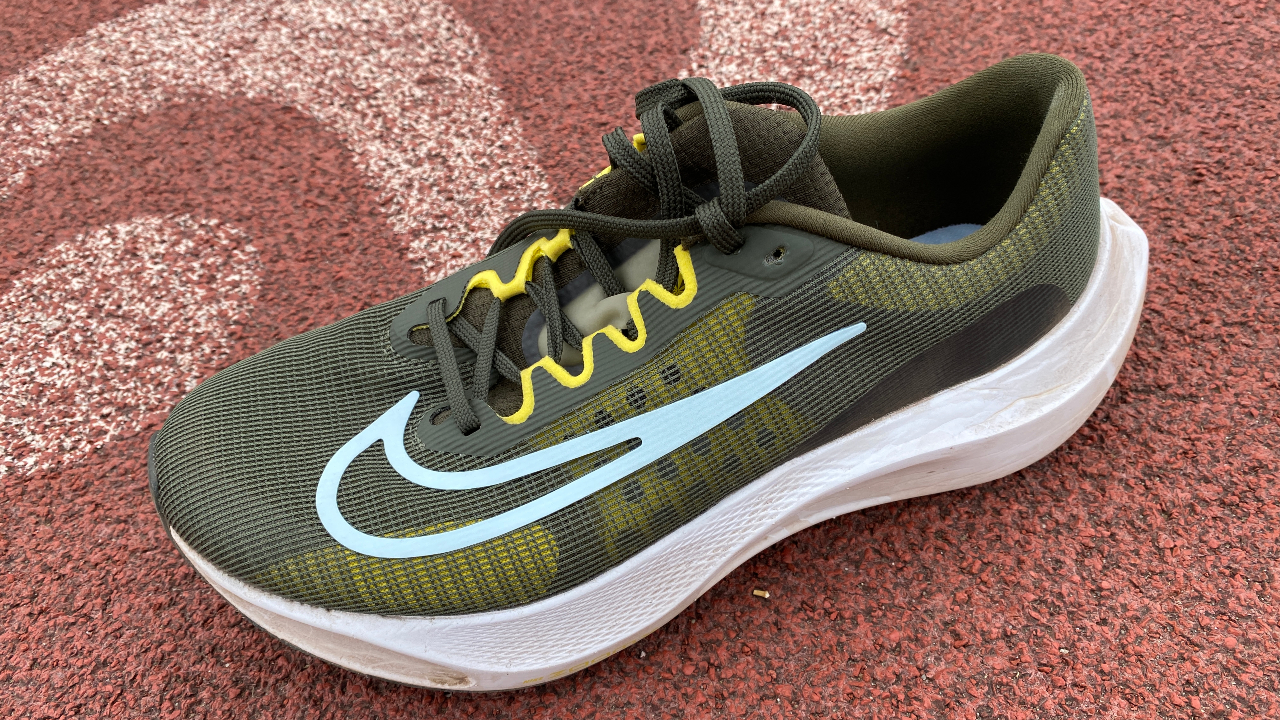
Specifications
Reasons to buy
Reasons to avoid
The Zoom Fly 5 is the plated training partner to Nike’s top racing shoes, the Vaporfly and Alphafly, but it fails to deliver the magic of those shoes. The midsole is made from a mix of recycled ZoomX and SR-02, an EVA foam that protects the ZoomX “core”. Sadly, the shoe has a dull and unimpressive ride. The Zoom Fly 5 is also heavy, and not well suited for fast running, so don’t pick it up hoping for a cheaper alternative to the Vaporfly for your races. It is a decent daily trainer that is comfortable on easy and long runs, and the outsole grips well on roads and light trails in the summer. However, whether you’re looking for a plated fast training shoe or a daily trainer, there are many better options than the Zoom Fly 5.
Read more in my Nike Zoom Fly 5 review
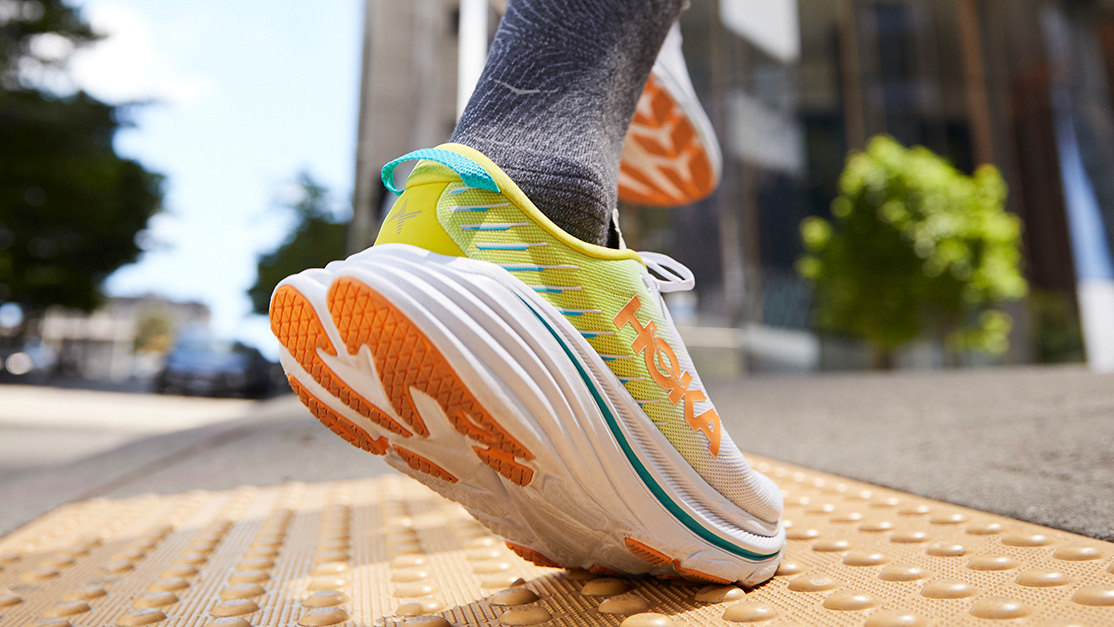
Specifications
Reasons to buy
Reasons to avoid
The Bondi X offers a different experience from most carbon plate shoes by taking its cues from the classic Hoka Bondi, a maximally cushioned shoe built primarily for comfort rather than speed. It’s a more stable carbon plate option that works best for everyday training and we found it performed at its best for easy to steady running, rather than anything particularly quick thanks partly to the bulky design. Whether you actually need a carbon plate shoe for that kind of running is unclear, but if you’re keen on the idea of investing in a carbon shoe but want something a little less aggressive than the carbon racers most brands make, then the Bondi X is an interesting option.
Read more in my Hoka One One Bondi X review
Best Carbon Plate Trail-Running Shoes
Best Trail Shoe
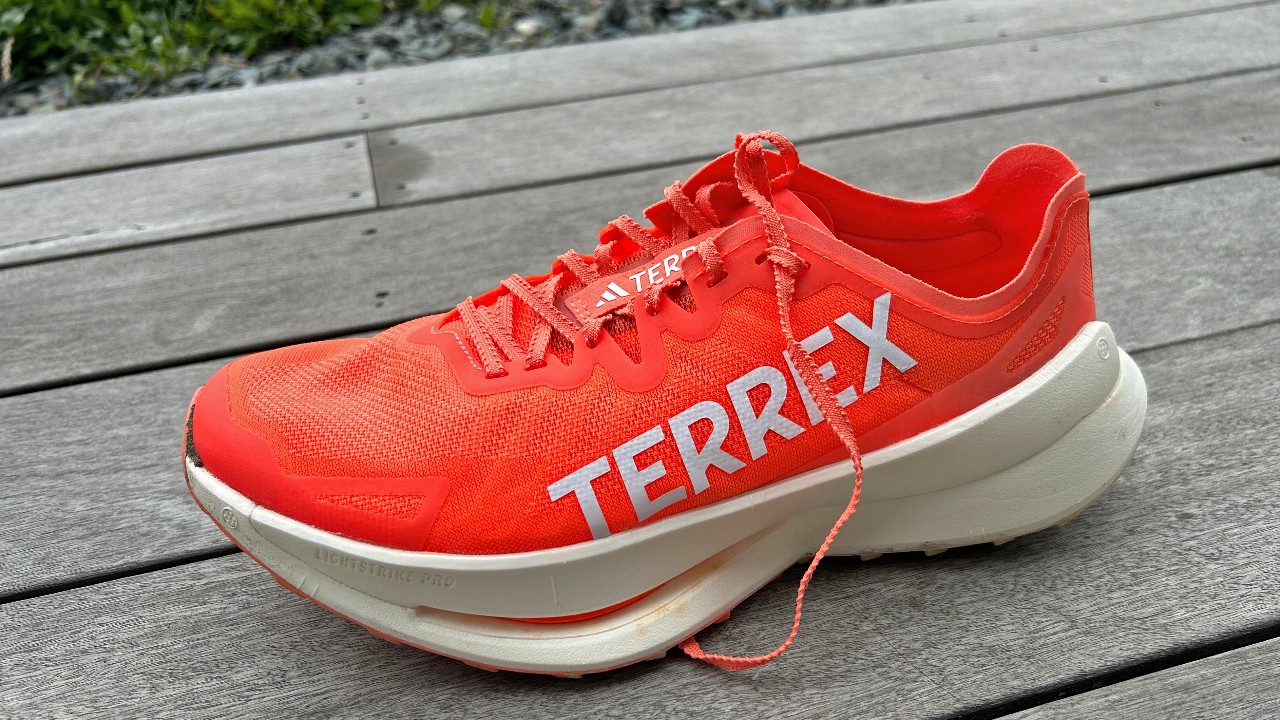
Specifications
Reasons to buy
Reasons to avoid
It’s debatable whether the Adidas Terrex Agravic Speed Ultra counts as a carbon plate shoe, since it has a series of plastic rods running through the midsole rather than a plate, but the effect is the same and it’s built to be a super-shoe for the trails, with a big stack of Adidas’s Lightstrike Pro cushioning underfoot and an aggressive, rockered design.
It’s not the most stable shoe, with a narrow midfoot in particular, but I found it comfortable and fast for running at any distance, from short off-road sessions to a 30-mile run. It’s the closest a trail shoe has come to replicating the propulsive feel of a road shoe, and the best overall option for off-road racing, though the Asics Fujispeed 2 is close to as good and a lot cheaper.
Read more in my Adidas Terrex Agravic Speed Ultra review
Best Value Trail Shoe
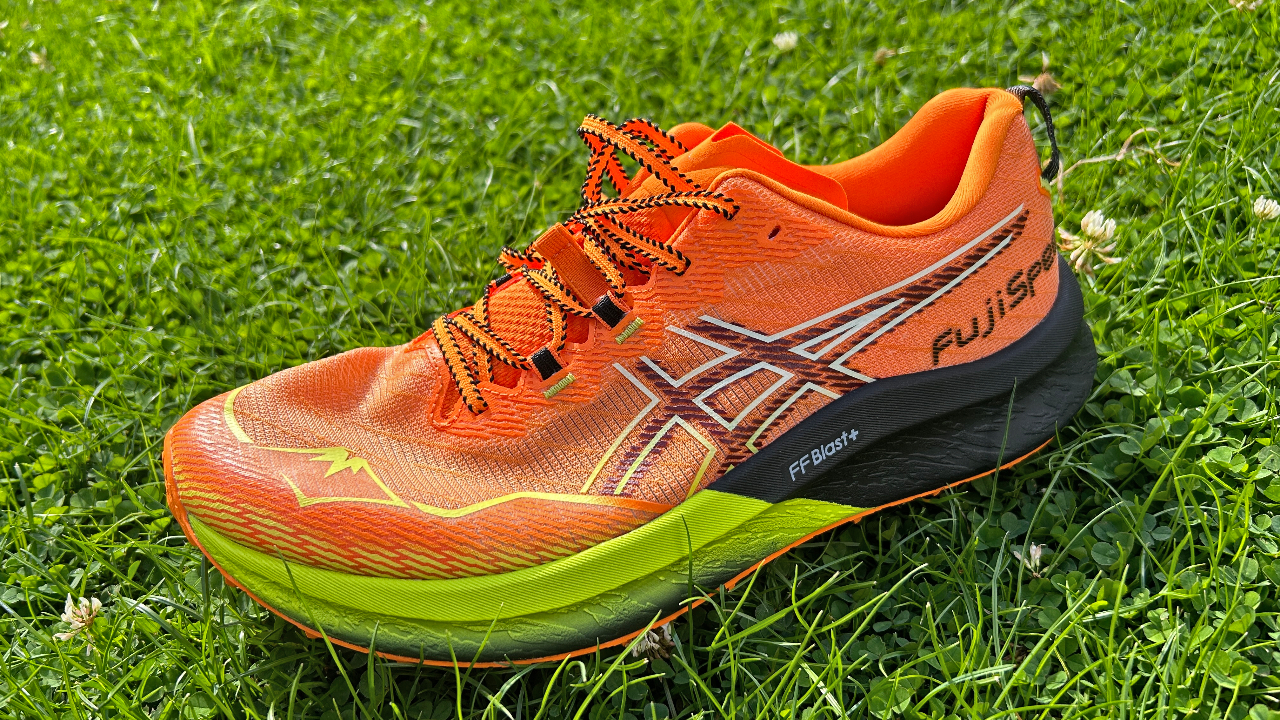
Specifications
Reasons to buy
Reasons to avoid
The most affordable carbon plate trail shoe I’ve tested is also one of the fastest, with only the Adidas Terrex Agravic Speed Ultra standing out as a more propulsive option for trail racing. The Fujispeed 2 is lighter than the other options on this list, and has a fast, rockered ride that’s great for tearing up shorter events on tame trails. It’s also cheaper than other trail super-shoes, and the outsole grips well on a variety of terrain, even having enough bite for short stints of mud.
If you’re planning on doing ultra-marathons, or regularly hit technical mountain trails with steep descents, the Fujispeed 2 has its drawbacks. It’s not as comfortable as shoes like the Nike Ultrafly, and the narrow platform isn’t as stable on fast descents as shoes like the Hoka Tecton X 2 or Saucony Endorphin Edge.
Read more in my Asics Fujispeed 2 review
Best For Ultra-marathons
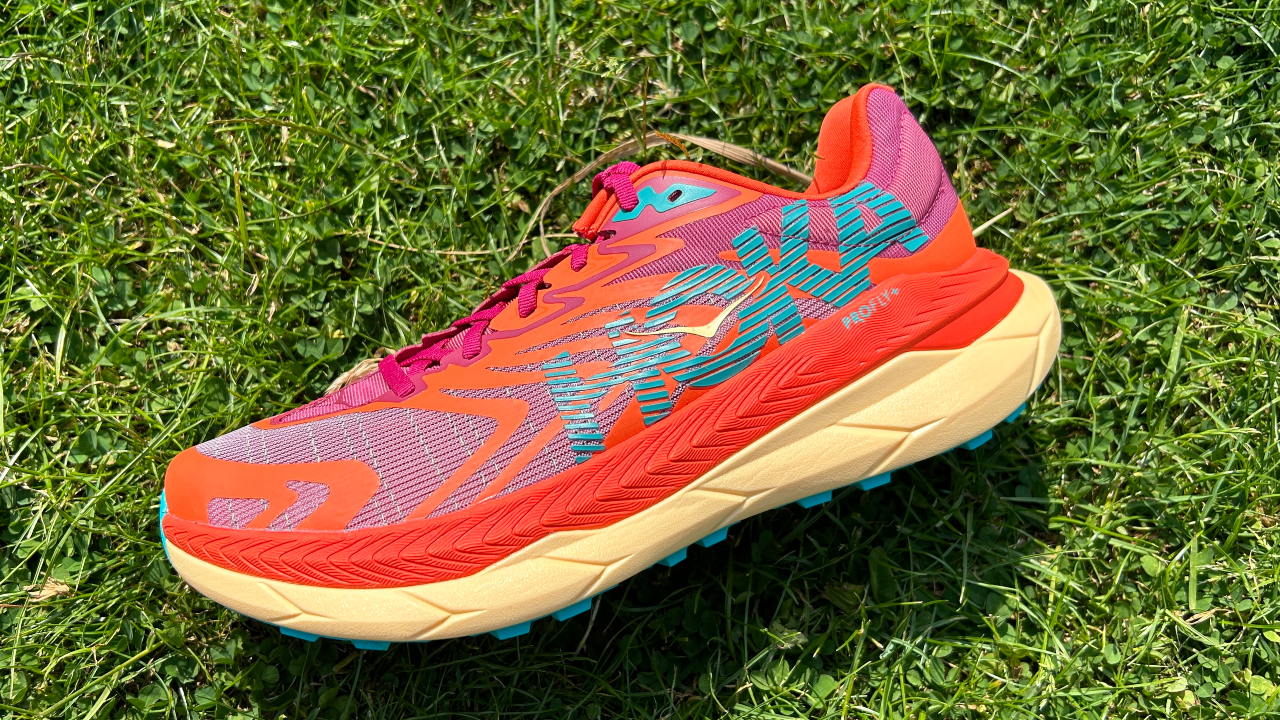
Specifications
Reasons to buy
Reasons to avoid
The second version of the Tecton X 2 is similar to the first, but the new Matryx upper is fast-drying and helps to create a more secure fit, which is valuable when charging down tricky trails. That said, I liked the upper on the original Tecton X and would have no hesitation in grabbing the older shoe if it was available for less than the Tecton X 2.
This is because the midsole and outsole are unchanged on the new shoe, with a dual-density midsole combining with twin carbon plates to create a comfortable, fast ride for trail runs of any length. The outsole impressed me, gripping well across a variety of trails as well as being comfortable on the road, though it’s not a shoe for deep mud.
It doesn’t have the bouncy feel of some trail super-shoes, but the Tecton X 2 is a reliable option for racing at almost any distance, and its stable, comfortable ride and versatile grip make it especially good for tackling ultra-marathons where you will encounter a range of terrains.
Read more in my Hoka Tecton X2 review
Carbon Plate Running Shoes Buyer’s Guide
Do carbon shoes make a difference?
There now seems little doubt that carbon plate shoes do make runners more efficient and help them log faster times, with scientific studies and a vast amount of anecdotal evidence from pro and amateur runners attesting to that. Not all carbon shoes are created equal, though, and it seems that some runners respond more to the shoes than others.
What does the carbon plate in running shoes do?
Carbon plate running shoes usually have a large stack of soft, bouncy foam in the midsole, and the plate helps stabilise that foam. It also helps to return energy with each footstrike, creating an efficient transition onto your toes and then propelling you on your way.
What are the key features of carbon plate running shoes?
For the most part, carbon shoes have a high stack of midsole foam with a full length carbon plate running through it. In shoes used for official racing, this foam stack can be no higher than 40mm according to World Athletics regulations. There are some shoes that go as high as 50mm, though these are mainly designed to be used in training.
Advances in foam technology have been just as important to creating modern super-shoes as the plate. The foams are very bouncy and very lightweight, which means they protect the legs and boost energy return without making the shoe too heavy to race in.
The midsole is where all the key tech of a carbon shoe is found. The uppers are usually designed to be as lightweight as possible while holding the foot securely, and outsole rubber is also kept to a minimum to provide grip without adding much weight.
What are the different types of carbon plate running shoes?
The Nike Vaporfly, which kicked off the carbon trend, and the super-shoes that initially followed it were built purely for road racing at any distance. Since then, several categories of carbon shoes have emerged. There are carbon shoes designed for long-distance road races such as the marathon and beyond, and these are more cushioned and heavier than carbon shoes specifically built for shorter events like 5K and 10K.
There are now also carbon plate trail-running shoes for off-road races, and many brands also sell plated shoes for training. These sometimes don’t have carbon plates, instead using nylon or TPU, or a mix of those materials with carbon, in order to be more comfortable for regular training runs.
What shoes do the fastest elite runners wear?
If you watch elites race regularly you could be forgiven for thinking only Adidas and Nike make carbon shoes, since their sponsored runners dominate the podiums. Eliud Kipchoge is the fastest marathoner of all time, and he used the Nike Alphafly NEXT% 2 to set the world record in Berlin in 2022.
Adidas and Nike do make brilliant carbon shoes, but just picking up what the likes of Kipchoge wear is not necessarily the best idea. Having the marketing budget to sponsor the best runners in the world doesn’t necessarily mean they make the best shoes. That said, we do think Nike makes the best shoes, for now at least.
If the shoes are designed for the likes of Eliud Kipchoge, do normal runners also benefit?
Elite runners like Eliud Kipchoge are not only a lot faster than the average runner but they may have differences in their gait. So we asked Bret Schoolmeester, global senior director at Nike, whether carbon shoes built for the best runners in the world deliver equal benefits to normal people.
“There’s some data to suggest that there is a difference here and there, but actually the exciting thing for us is that there are a lot of unknowns about how much people respond to the shoe,” says Schoolmeester. “Early days, looking at biomechanics studies and efficiency studies, [with the Vaporfly] everyone responded—it was just how much. We’re constantly exploring what dictates why someone might get a bigger response than others.
“The thing we take heart in is that these shoes have given a more enjoyable experience to all runners. If you compare it with running a marathon in flats, very few people could get away with it. All the studies we have show people are getting a benefit, just to varying levels.”
How much more can carbon shoes improve given the World Athletics limits?
In official events, road racing shoes are now limited to a stack height of 40mm and can only have one carbon plate in the midsole. Most top carbon shoes already hit these limits, so how much more can shoes improve?
“Both in terms of the raw ingredients and how we can process them to use them more optimally, there’s still plenty we can do,” says Schoolmeester. “In the Vaporfly 3 we’re processing the ZoomX in a slightly different way in the last stages of the foam, which has [enabled us] to optimize the same base compound even further. There’s quite a bit of room to run in that. We still think we can go further with how we optimize the plate too.”
Do carbon plate running shoes cause injury?
Carbon shoes are very stiff and, by design, change your running gait a little. While there’s no established evidence they cause injury, many runners at all levels are wary of using them too much. They’re also quite unstable because of the soft foam used, which can cause problems for runners who overpronate; they would be better off with one of the best stability shoes.
What are the downsides of carbon plate running shoes?
Along with the possibility of an increased risk of injury if you use them too much, partly because they are quite unstable, the main downsides of carbon plate shoes are that they are very expensive and usually not the most durable.
How long do carbon shoes last?
That depends on both the shoe and the runner, but in general carbon shoes are less durable than training shoes. If you tend to get 300-500 miles from a pair of training shoes, you’re likely looking at 200-300 miles from a carbon shoe before it’s past its best – though it will still be usable after that.
Carbon shoes are less durable largely because they have thinner uppers and outsoles that show wear faster, but the midsoles can also compress and lose some of their spring. This happens in all shoes, but in your racing shoe you want the best performance, so many runners will relegate a carbon shoe to training use after a couple of hundred miles and get a fresher pair for racing.
Why are carbon plate running shoes so expensive?
The price of carbon shoes has been high since the original Nike Vaporfly and has only been increasing since – the latest shoes from Nike and Saucony cost around $280/£280 at RRP. The shoes tend to have brands’ latest and best technology in them, and a lot of research goes into making them. The materials involved might also be pricier than those used for standard training shoes, but the high price is also down to demand – serious runners are prepared to pay top dollar for a premium product.
However, the market is now saturated with carbon shoes and older versions are regularly in sales, including some of the best available like the Nike Vaporfly NEXT% 2 and Saucony Endorphin Pro 3. Even as the price of new releases continues to rise, carbon shoes in general are now more accessible and cheaper than they’ve ever been.
Can you run in carbon shoes all the time?
You can, but I don’t recommend it. Carbon plate shoes, especially those built for racing, are not that durable; they’re also stiff and designed for fast running, when you run with a different gait than you do when plodding along at your easy pace. Research is continuing into their potential impact on injury risk, but in my opinion there’s no benefit in using them for easy runs. At best you’ll be wearing down your expensive shoes for no reason.
If you want to train in a plated shoe all the time, then super-trainers have more comfortable designs and some use plastic or nylon plates rather than carbon ones for greater flexibility. Even then, I think it’s worth having at least one non-plated option in your running shoe rotation to do the bulk of your easy runs in.
Are carbon shoes good for 5K?
Carbon plate shoes are the best option for 5K road races, just as they are for longer events like the marathon. The efficiency benefits and comfort they provide is less useful for shorter races, so the difference between super-shoes and a classic racing flat is less pronounced, yet I’d still opt for a carbon racer as my best option for a 5K.
Some caveats to this are that if you’re racing 5,000m on the track, you’ll need a shoe that has a stack height under 25mm (dropping to 20mm from November 1, 2024), so all the best carbon shoes are ruled out. Another thing to consider is that if your 5K race has a lot of twists and turns, some of the really big and unstable carbon racing shoes aren’t ideal options because it’s hard to turn quickly in them.
Sign up for workout ideas, training advice, reviews of the latest gear and more.

Nick Harris-Fry is a journalist who has been covering health and fitness since 2015. Nick is an avid runner, covering 70-110km a week, which gives him ample opportunity to test a wide range of running shoes and running gear. He is also the chief tester for fitness trackers and running watches, treadmills and exercise bikes, and workout headphones.
